Here is a list of English Cabinet makers and antique furniture designers throughout the 18th and 19th century from A to Z.
A Blain Liverpool – Arthur Blain established in 1835, at 35 Paradise Street, Liverpool.
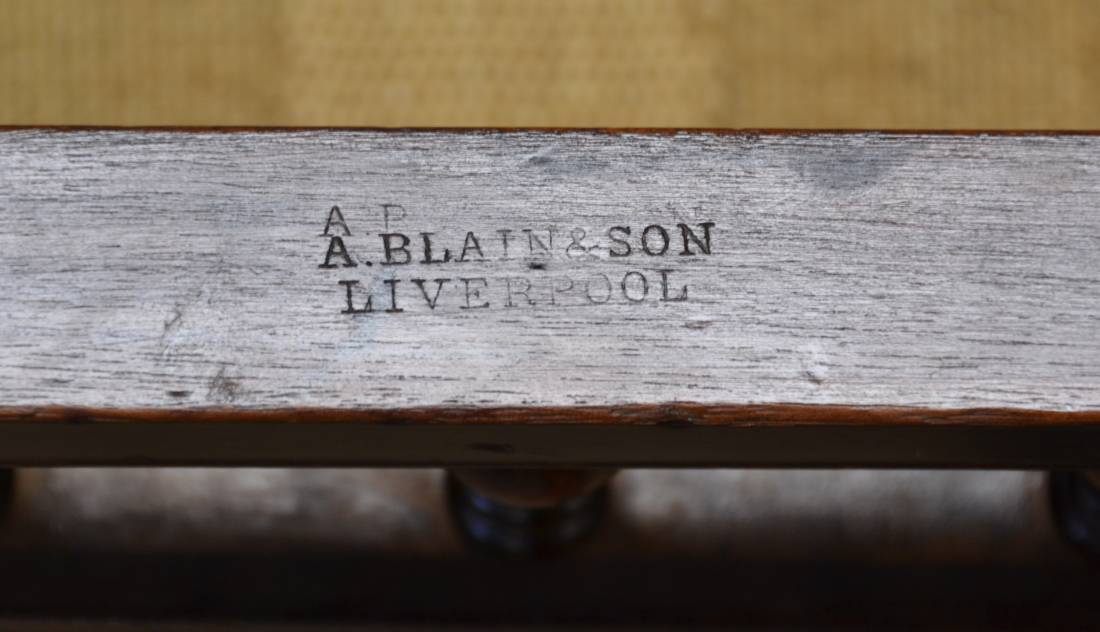
A. Gardner & Son were cabinet makers based at 36 Jamaica Street, Glasgow in Scotland.

Alex Smith – 61, Market Street, Colne – Cabinet makers who made Oak furniture in the late Victorian and early Edwardian period.
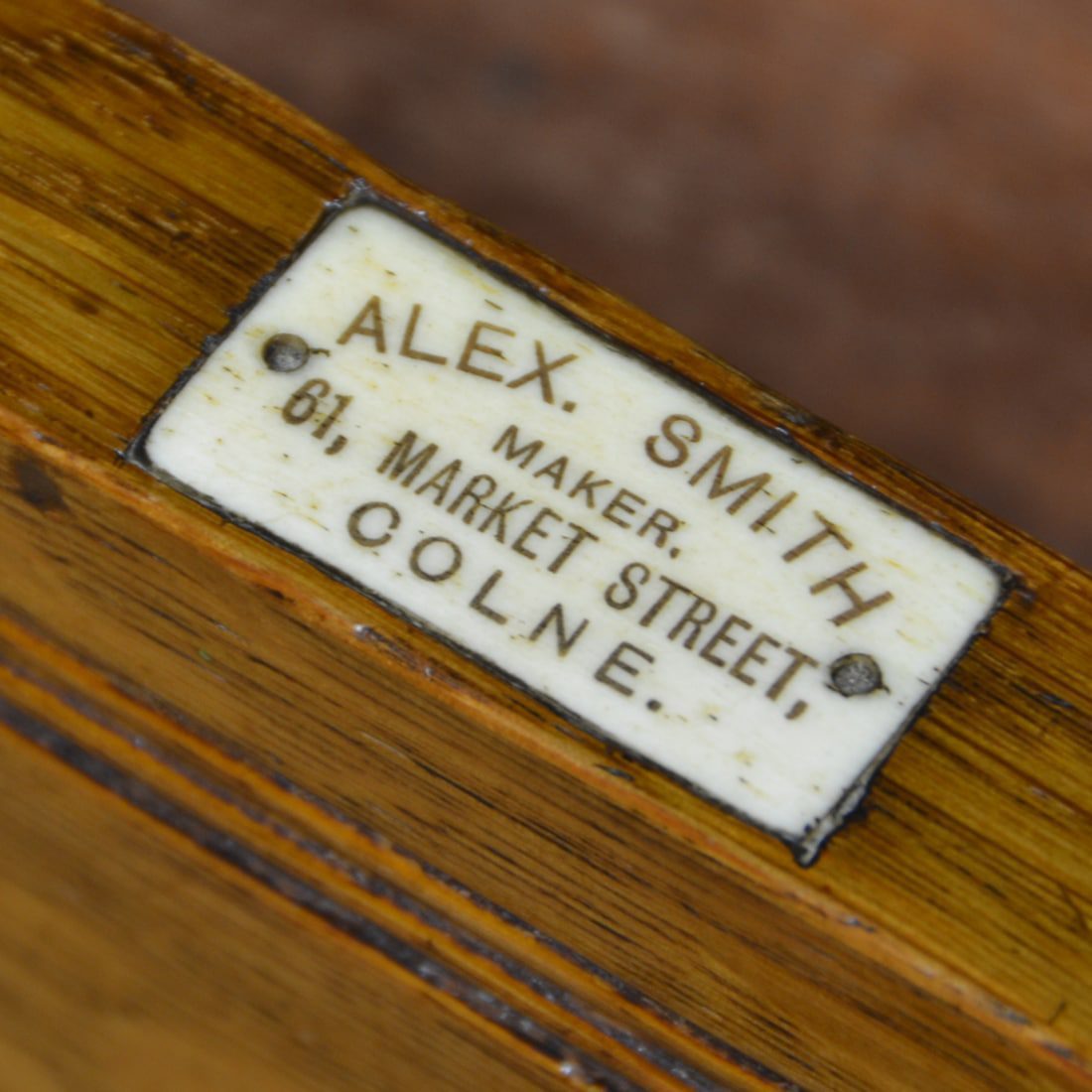
Allen & Appleyard – late 19th and early 20th Century furniture makers based in Rensaw Street & Bold Street, Liverpool.

Betjemann of London – Betjemann & Sons was run by George Betjemann and his two sons George William Betjemann and John Betjemann. They were Innovative cabinet and box makers that featured their own Betjemann patent mechanisms. They were most well known for the ‘The Betjemann Tantalus’.
Collinson & Lock – Established by Francis Collinson and George Lock in 1870. They produced unusual Aesthetic, arts and crafts and Art Nouveau furniture at 109 Fleet Street London. In 1873 they expanded and to St Bride Street and also opened a factory in Pear Tree Court, Farringdon Road. In March 1885 they moved to 70 to 86 Oxford Street. Collinson & Lock were especially well known for their wood carving and inlay detailing on furniture. In 1897 the company went into liquidation and was taken over by Waring and Gillow.
Cockcrofts Of Halifax -Made quality sets of dining chairs in the Victorian period that would compliment most dining tables beautifully. They used quality woods like Mahogany and used designs like the spoon back or balloon back.
Constantine & Co – specialised in arts and crafts furniture towards the end of the 19th Century . We have had a superb example of an Antique Card Table made from Oak by this maker.
Cranston & Elliot of Edinburgh – from North Bridge, Edinburgh, Scotland, they were cabinet makers, upholsterers and house furnishers. They mainly used inlay like this Edwardian Mahogany Side Table with spectacular inlaid inlay centre along with a satinwood cross-banded edge, boxwood and ebony string inlay.
D and H Waddington Bolton – They traded between 1876 – 1877 and were listed at 113 Bradshawgate and 1 & 3 Breightmet Street, with works at Clive Street, Bolton. They made spectacular pieces of furniture with the finest quality mahogany timbers and inlays.
Druce & Co – Renowned furniture cabinet makers based in Baker street London. Established Thomas Charles Druce and his son, Herbert Druce took over the business in 1864.

Eben Olding – Made high quality English antique case pieces in the early 19th century like this regency chest. They were upholsters and cabinet makers from Fleet street, London.
Edwards and Roberts – Among the best English antique furniture cabinet makers of the second half of the 18th century. Founded in 1845 at 21 Wardour Street.

Edwards & Sons – were a high quality cabinet maker based in Newcastle and Staffordshire in the mid to late 19th century. They made superb pieces like bookcases with spectacular floral carvings.
Ee-Zi-Way – They created an Oval Extending Dining Table from 1920 to 1940 that contains a central leaf that folds away beneath the table. They usually have an ivorine label reading ‘ The Ee-Zi-Way One Motion Extending Dining Table’.
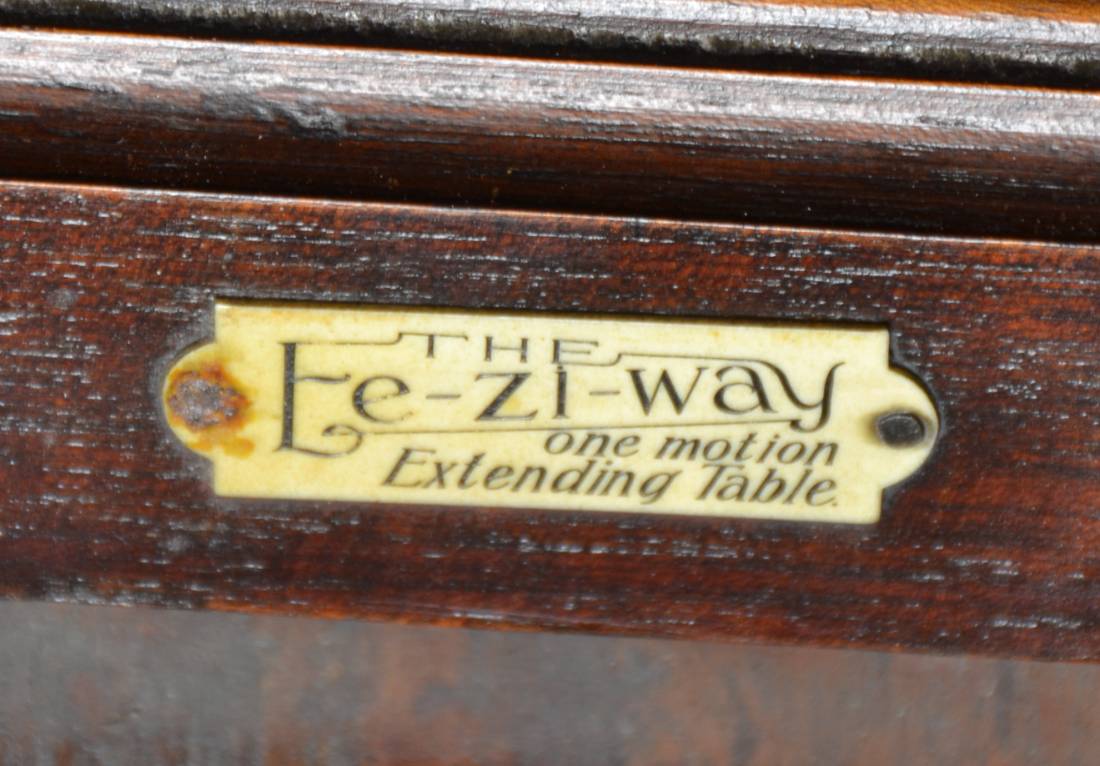
F.J.Mercer – Successor to A.Jessop – Cabinet Maker, Upholsterer, Carver, Gilder, Picture Framer and looking Glass manufacturer – Fargate Sheffield.

Galloway And Sykes Aberdeen – Used the finest quality inlay with urn designs, scrolled flowers and intricate individual mother of pearl centres.

G Hardy & Co – Cash House Furnishers, Oldham st, Manchester.
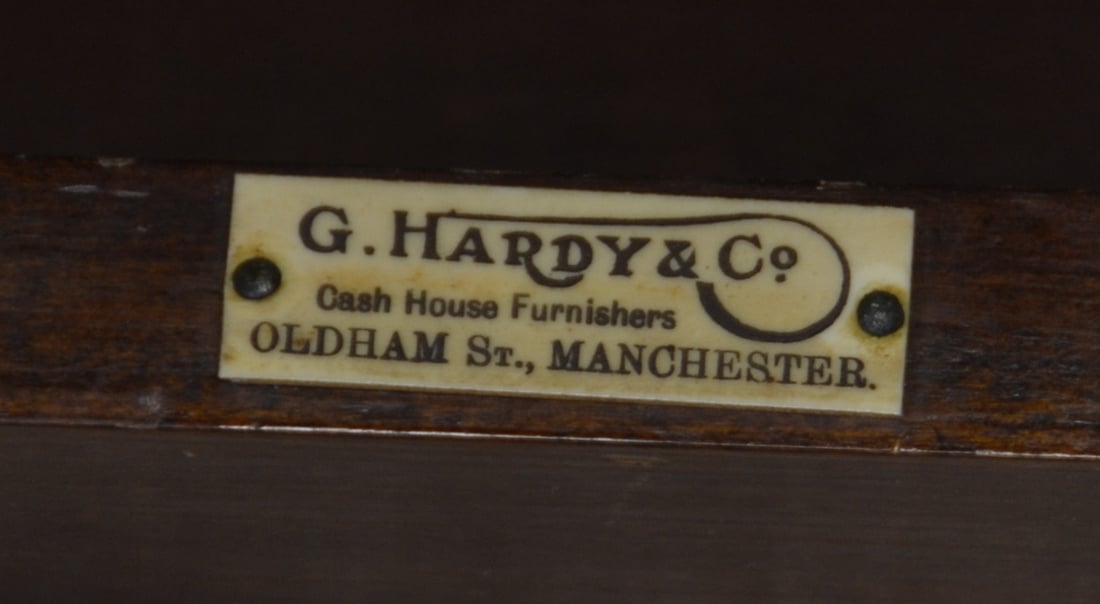
Gillows of Lancaster – Robert Gillow was the founder in 1731. Gillows quickly got recognised to be one the best cabinet makers of their time. In the 1740s, they chartered ships, to import Mahogany from the west indies and Jamaica. They later became known as Waring & Gillow.
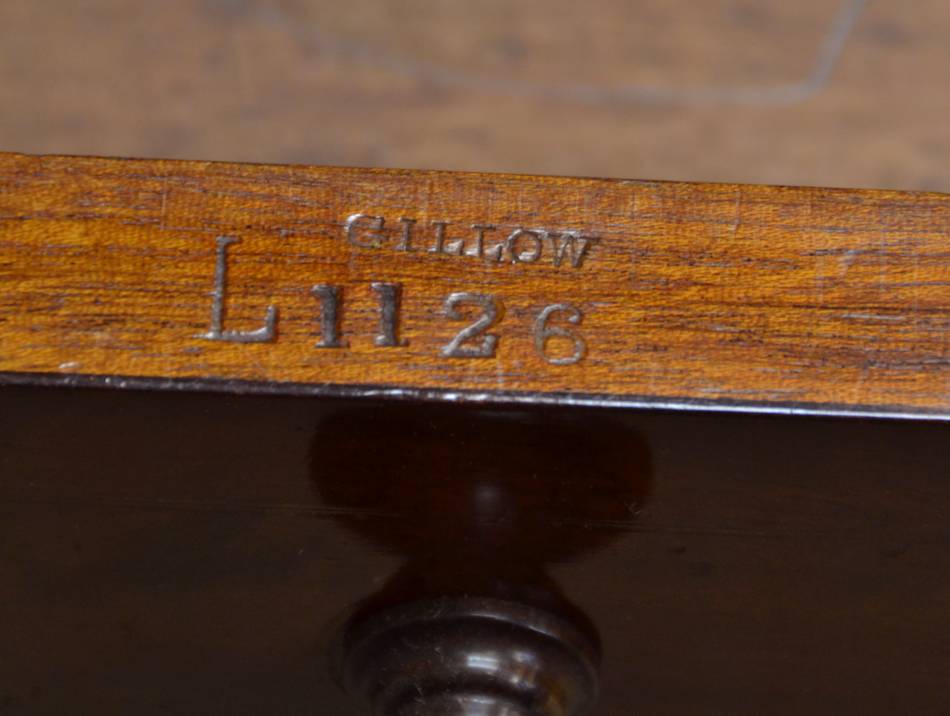
Globe-Wernicke – established in 1899 by Otto Wernicke, owner of Wernicke Furniture Co bought the Globe Company. Specialised in stacking barrister bookcases. They fell into receivership in 1932 because of the Depression but then it re opened in 1934.

Golding and son – based in bolton, northern England, they specialised in Art Nouveau furniture and particularly Display Cabinets.
Gunn – They mainly made stacking bookcases from the early Edwardian era to the 1930s/40s Art Deco period. They did make some of nice smaller slim proportions and more unusual designs.
Hampton and Sons – established in ca. 1830 by William Hampton. set up selling fine furniture in Cranbourn Street, in London. In 1869 Williams Two sons George and William joined his business and they expended and moved to the larger premises 8 Pall Mall, London. They bought several cabinet making firms with James Coulson and Co of Lisburn, Northern Ireland in 1898, and then Goodall, Lamb and Highway of King Street, Manchester and Robson and Sons Ltd of Newcastle-upon-Tyne.
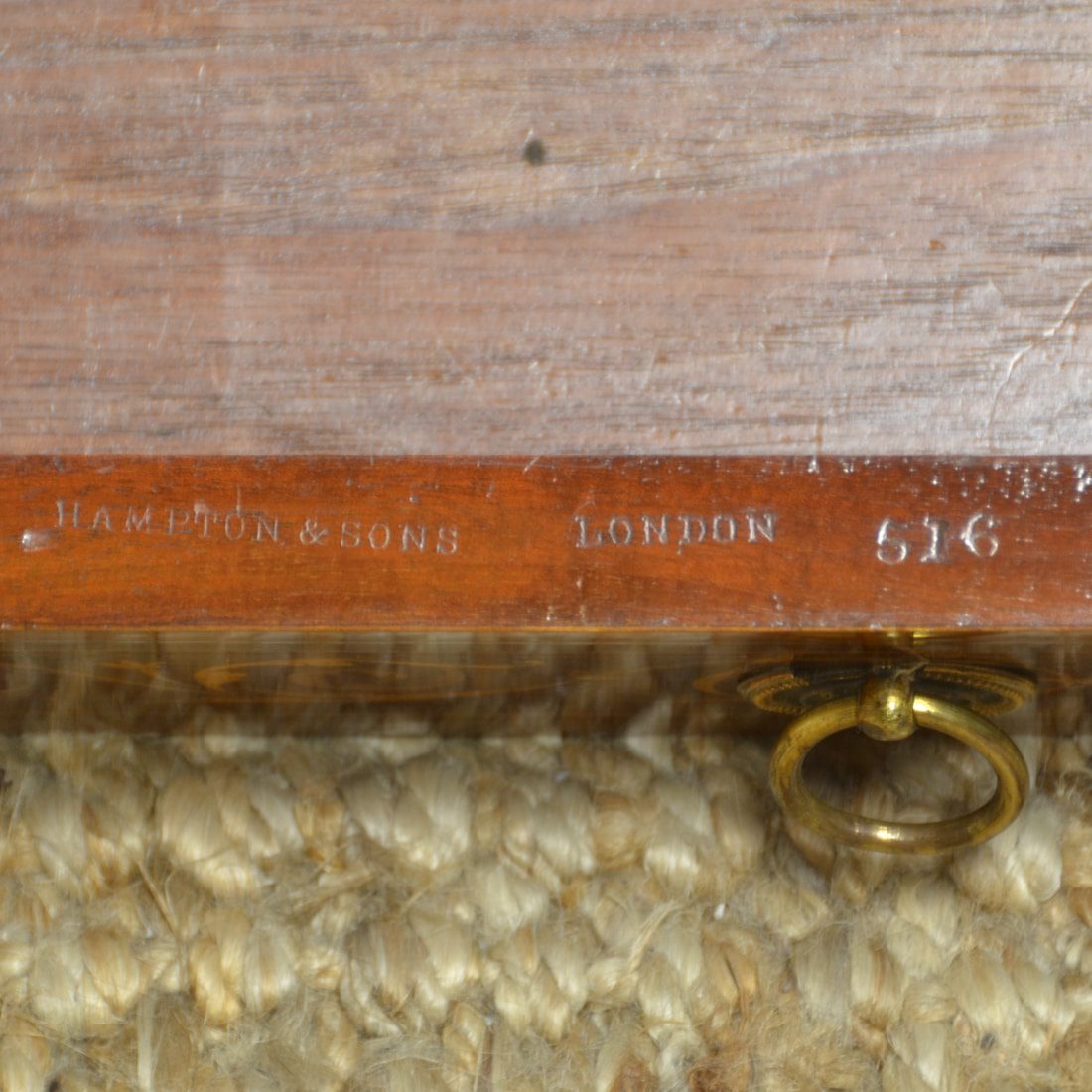
Harris Lebus – Started in Tabernacle street EC1, and in 1901 presided over a brand new, purpose-built cabinet-making steam works at Tottenham Hale, N17.
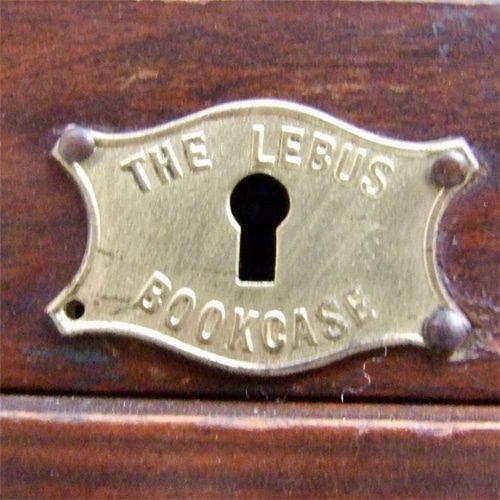
Harrison & Son of Burnley – late 19th Century cabinet makers in Lancashire who built high quality Antique Furniture.
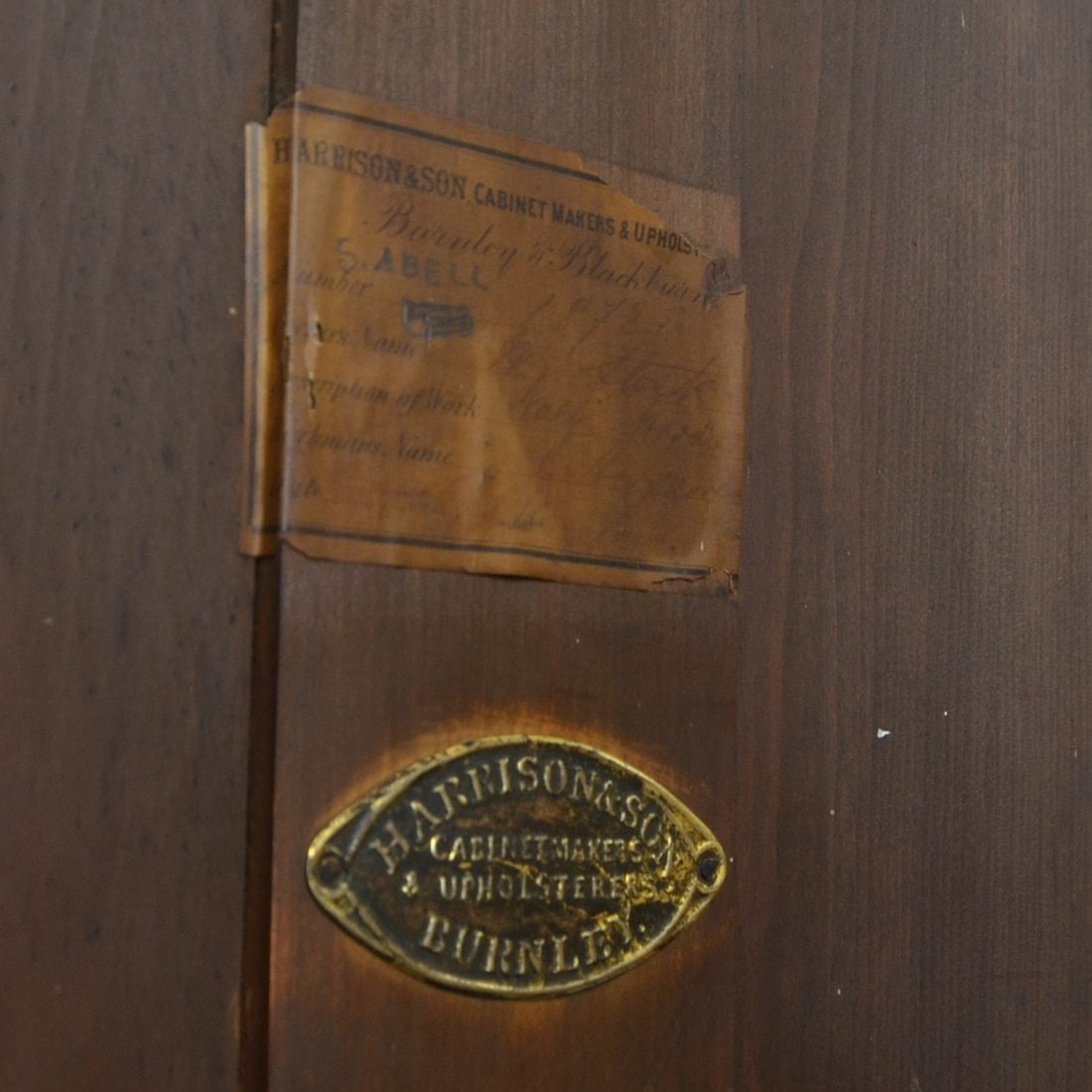
Harrods Limited – Retailers of antique furniture from their furniture department in London.

Heals of London – established in 1810 by bedding manufacturer John Harris Heal, in Tottenham Court Road. His Grandson, Ambrose Heal joined in 1893 and introduced new, more modern Arts & Crafts designs.

Holland and Sons – founded in 1803 by William Holland. Originally, They were cabinet makers and upholsterers called ‘Taprelland Holland’. In 1843 they changed their name to ‘Holland and Sons’. By 1851, they employed over 350 cabinet makers. In 1852 they took on the prestigious firm of Thomas Dowbiggin of 23 Mount Street, London. They closed in in 1942.
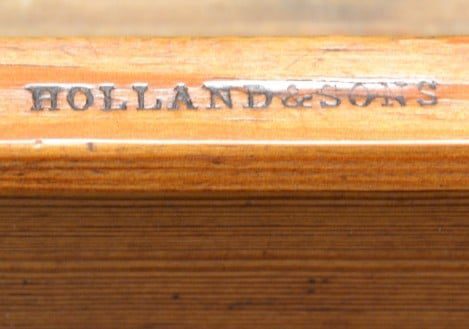
Howard and Sons London, were one of the best upholstery chair makers of the Victorian era. Howard and Sons were shown at large exhibitions around the world and supplied several Royal homes.
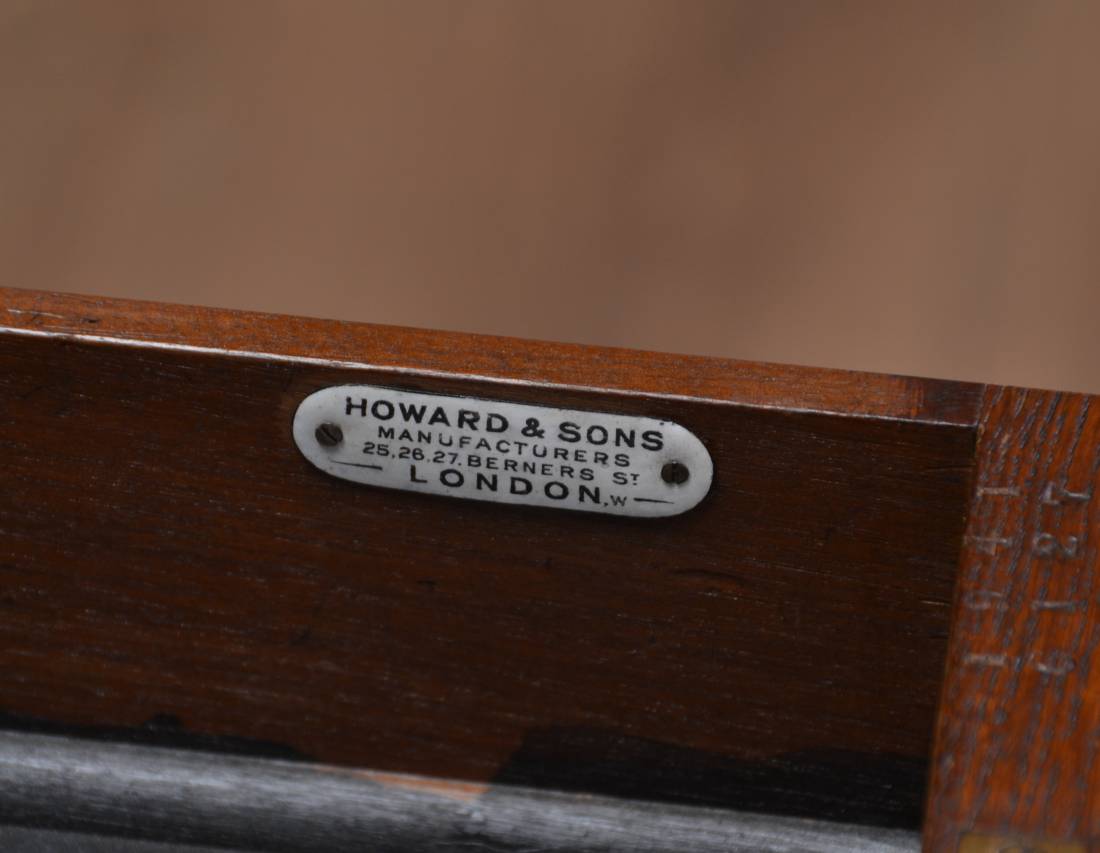
Hunt & Co, Late R. Johnson & Co. – Dealers in office furniture, they liked Arts and crafts designs.
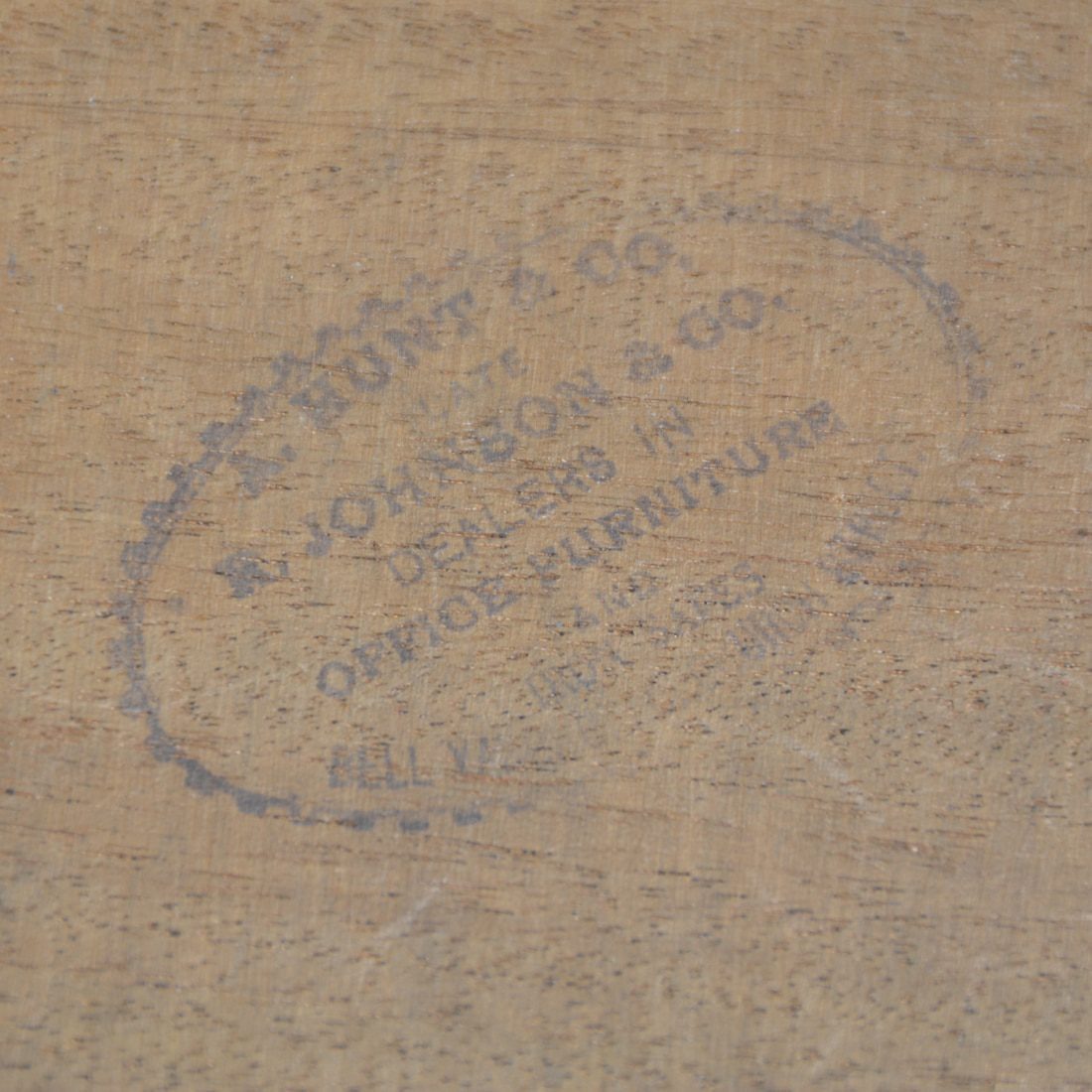
Ibex – They made Swedish pine chairs called ‘Penny Chairs’ in the late 19th and early 20th Century.

James Gardner – James Gardner by appointment to her Late Majesty the Queen, 52 High Holborn and 292 Oxford Street, corner of Davies Street, London. Animal, Bird & Fish Preserver and Hoof Mounter. The largest collection in the kingdom of bird, skins, eggs and insects. Manufacturer of entomological apparatus and cabinets. Artificial human eyes, also for birds and animals. They made interesting chests in an unusual designs like small a wellington chest designs.
James Shoolbred & Co (Jas Shoolbred) was established in the 1820’s as a draper’s shop, at Tottenham Court Road, London. One of the first large department stores in London, who would supply quality antique furniture and accessories for the Victorian home.

James Winter & Sons – 101 Wardour St., Soho, London – 1823 to 1870. James Winter founded his company in 1823 as a cabinet maker, undertaker, dealer, appraiser and specialised as a restorer of second hand and antique furniture.
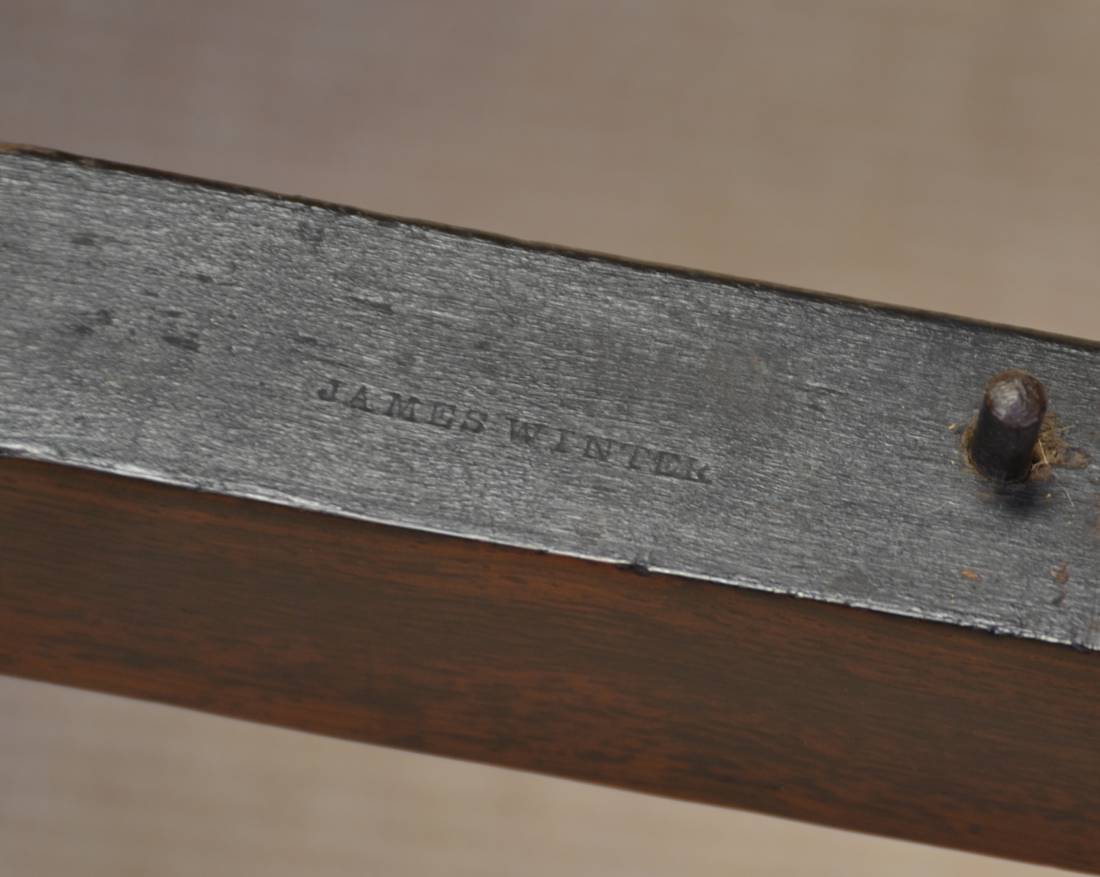
J Kendall & Co – Established 1783 in Leeds. Taken over by the well known firm of Marsh and Jones, later to be called by their better known name Marsh, Jones and Cribb.
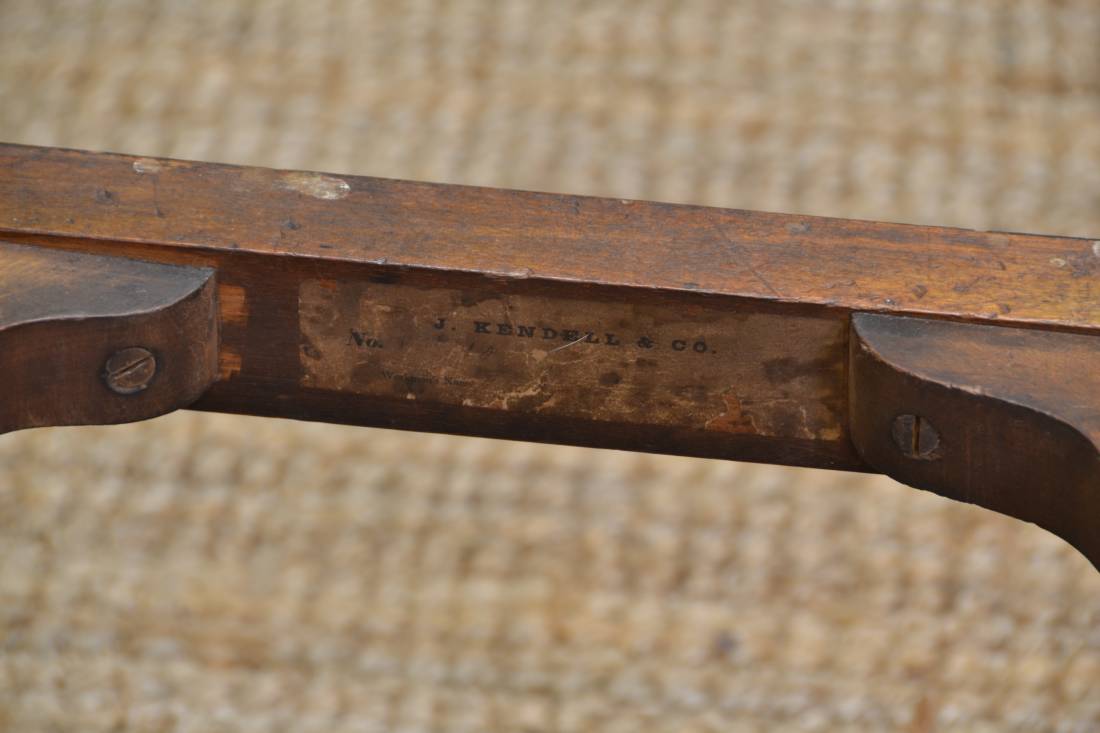
J Reilly – J Reilly made large sets of chairs and also large billiard tables in the late 19th century.
Johnson and Appleyards Sheffield – Based in Rotherham and Sheffield, Joseph Appleyard was a cabinet maker, upholsterer, gilder and furnisher. He ran the firm with his three sons and in 1879, they took over the Sheffield furniture-making business, ‘William Johnson & Sons’ of Sheffield. They then began trading as ‘Johnson & Appleyards Ltd’. They specialised in bedroom furniture and especially large impressive wardrobes.
Johnstone and Jeanes – 67 New Bond Street in London from 1842 until 1880 run by John Johnstone. John Johnstone joined Robert Jupe and became Johnstone, Jupe & Co at 67 New Bond Street They created the metamorphic table called the Jupe Table.

John Taylor and Sons – founded in 1825 in West Thistle Street, Edinburgh. He then moved to the more prominent position of 109 to 10 Princes Street Edinburgh – appointed ‘Cabinet makers and Upholsterers to Her Majesty the Queen’. Their Rosemount Cabinet Works at Gardner’s Court were established around 1857 until they went into liquidation in 1945.

Jos James – Penrith – Made high quality Victorian furniture like the Burr Walnut credenzas and glazed bookcases. These were mainly from the late Victoria era and were often of remarkable quality.
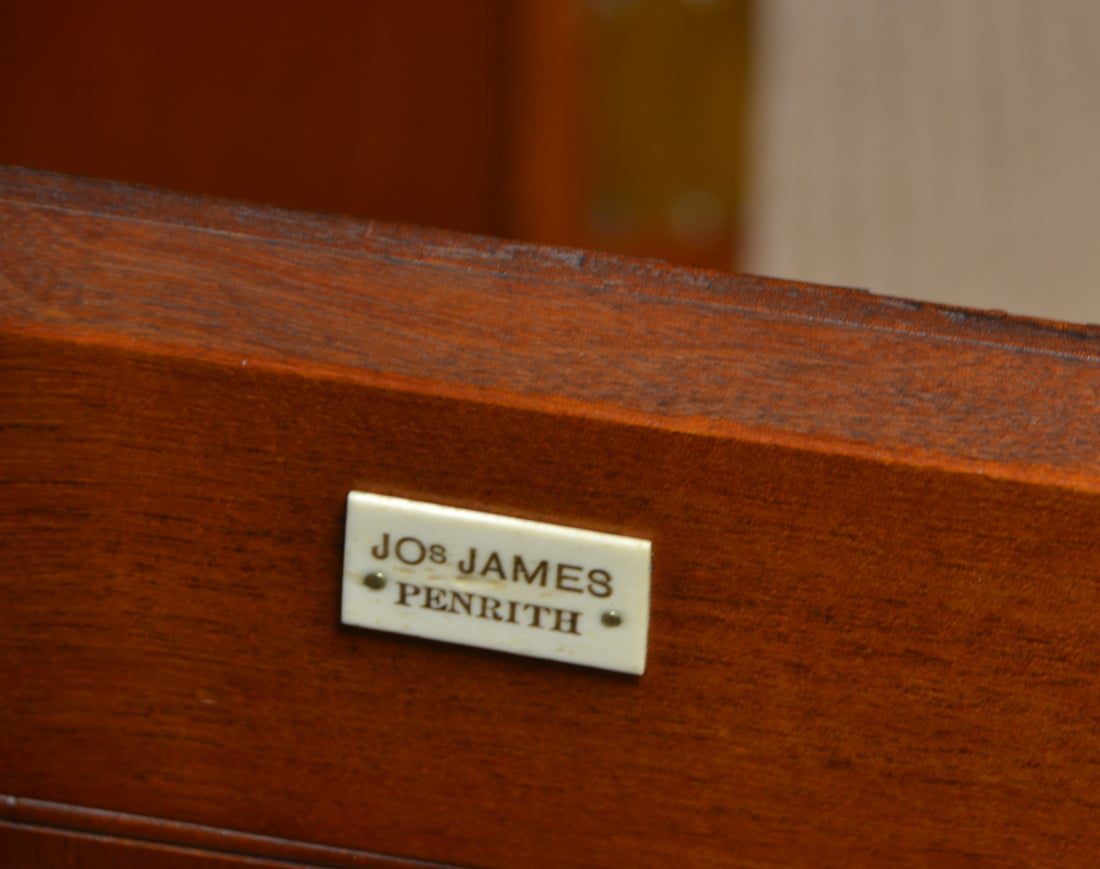
Kendrick & Jefferson ltd were founded in the early 20th Century. John Arthur Kenrick was a member of the well established hardware family in the Birmingham. He formed a business partnership with Frederick Thomas Jefferson, who was a local solicitor. Together they created a printing, equipment, stationery and office furniture business. They were well known for creating stacking Oak bookcases.
Lambs of Manchester – James Lamb was born in 1816, he joined the family business and turned it into a high class interior design, decorating and furnishing firm in Castleford and their gallery in John Dalton Street, Manchester.
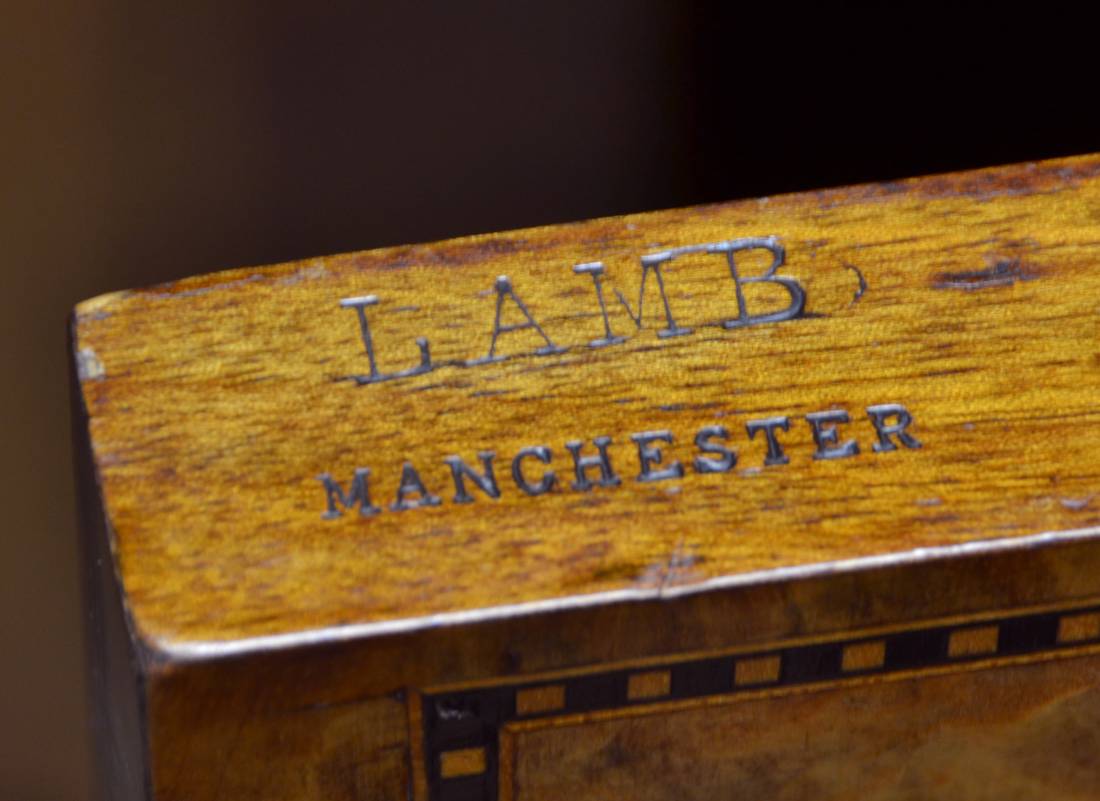
Maple & Co were one of the most successful cabinet makers between 1870 to 1950. Established by John Maple, a shopkeeper in Surrey, who later opened a furniture shop in Tottenham Court Road. During the late 19th and early 20th Century they had showrooms and workshops in London, Paris and Buenos Aires.
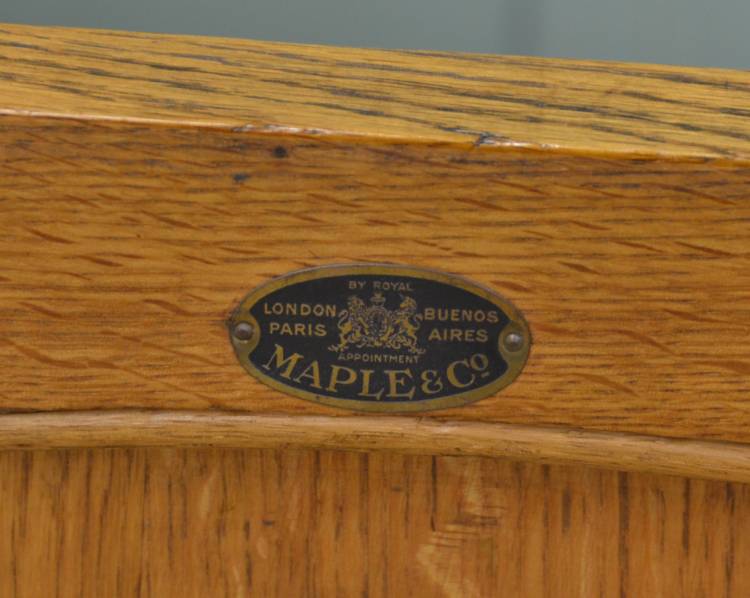
Marsh, Jones & Cribb – Established in 1850 in Leeds and expanded to Cavendish Square, London.

M.D.Miller & Sons – Shakespere St & Milton St – Nottingham. They produced fine Victorian bedroom furniture.
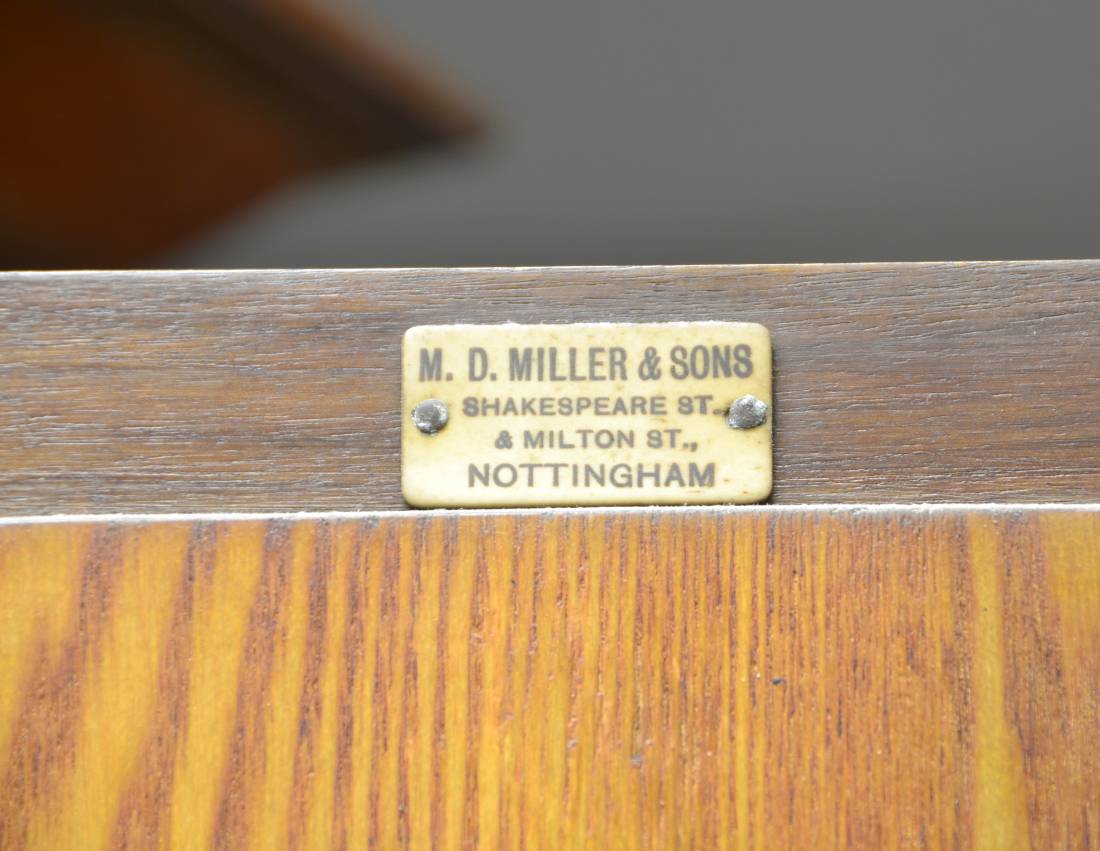
Miles & Edwards – 134 Oxford Street were cabinet makers and upholsterers between 1822 and 1844 – They were taken over by Charles Hindley & Sons. Their high quality cabinet makers flourished, earning them a Royal Appointment, and a part in the Great Exhibition.
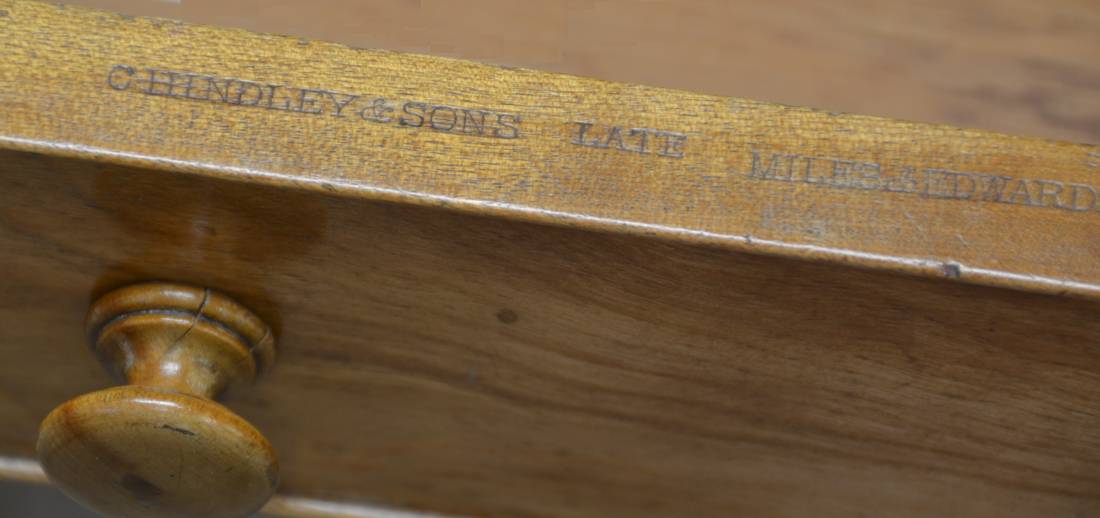
Minty – Based in Oxford and specialised in office bookcases.
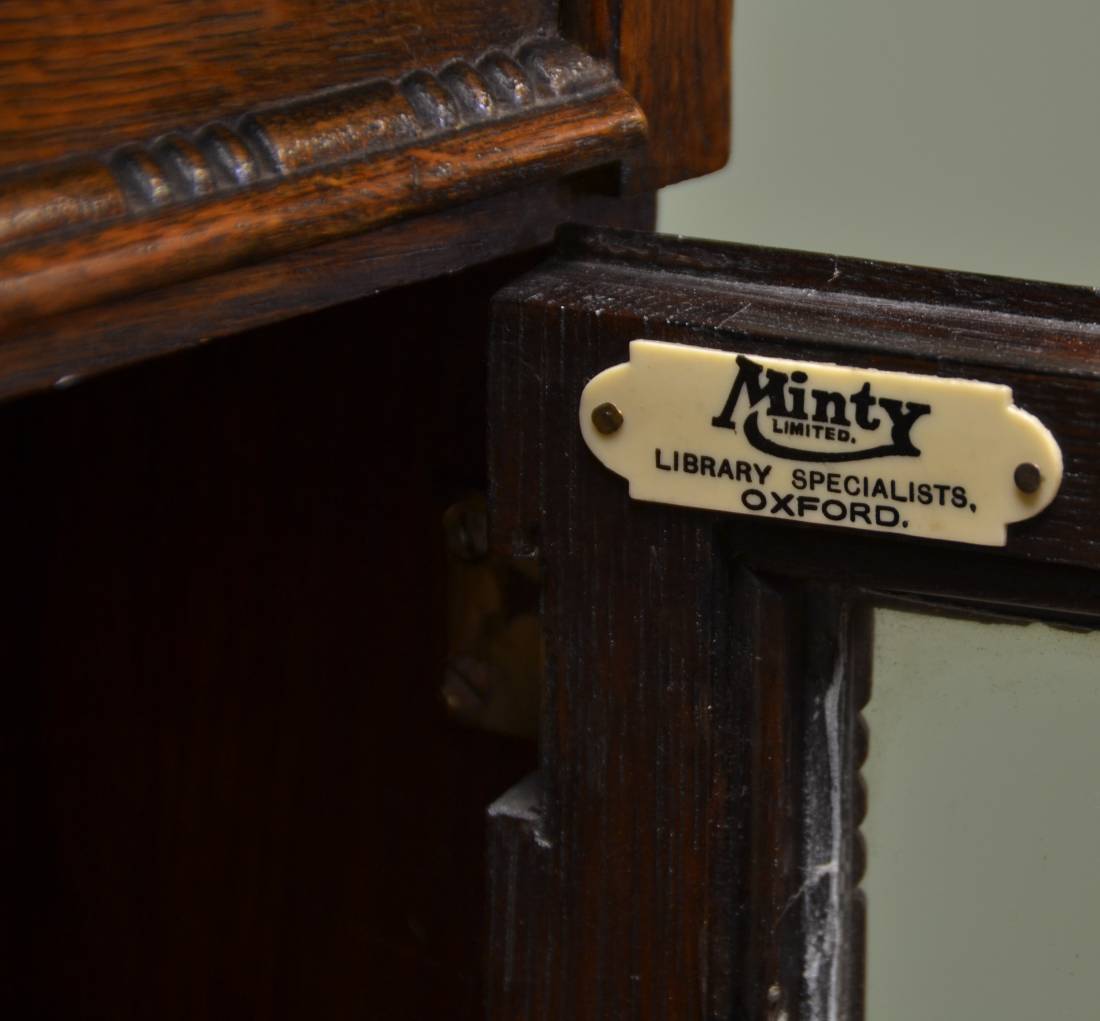
Morison & Co – established by Mathew Morison in Ayr, Scotland c.1808. Was sold to W Turner Lord and Co of London in 1902.
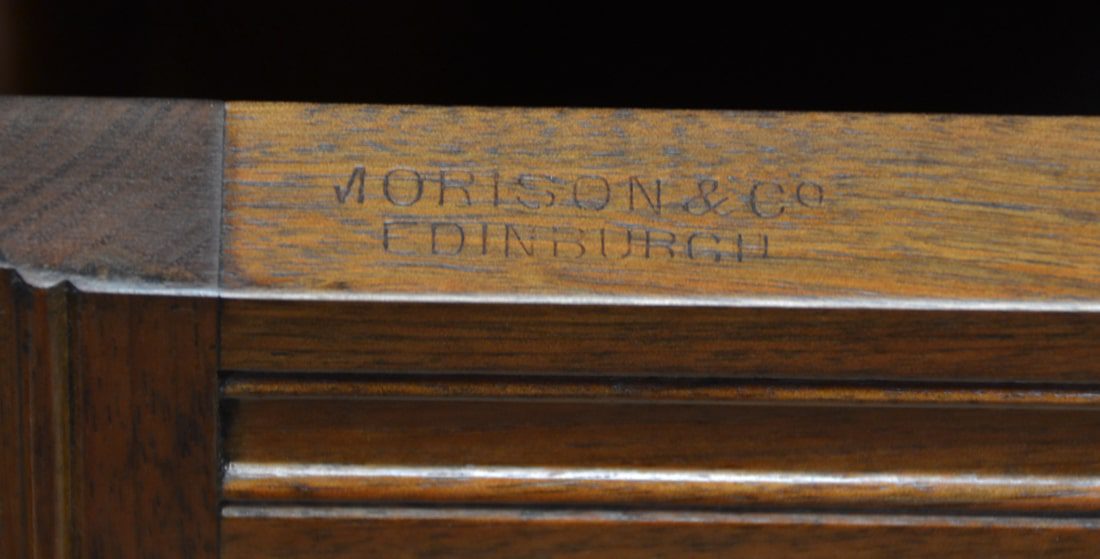
Mouseman furniture – created by Robert Thompson, Born in 1876 and was the son of a local joiner in Kilburn, Yorkshire. The furniture is made from solid oak and with the iconic mouse carvings.
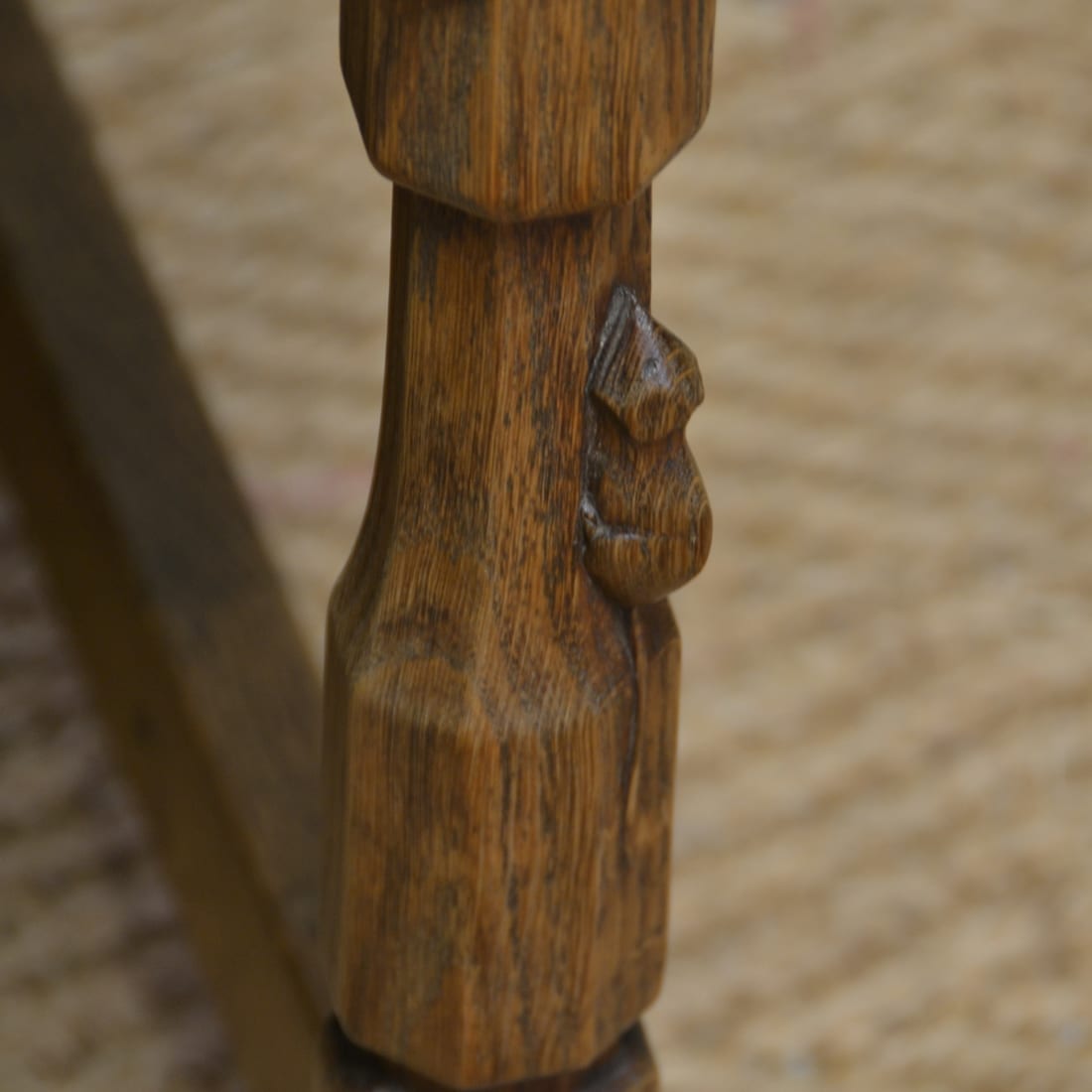
Muirhead Moffat & Co Glasgow- established in either 1894, 132 Blythwood Road, Glasgow. They restored earlier pieces of antique furniture. They would often use Georgian Period pieces, like chest of drawers and adapt them to unique smaller sizes.
Nuttall & Sons & Co – Antique and modern furnishers – Moss Street, Liverpool.
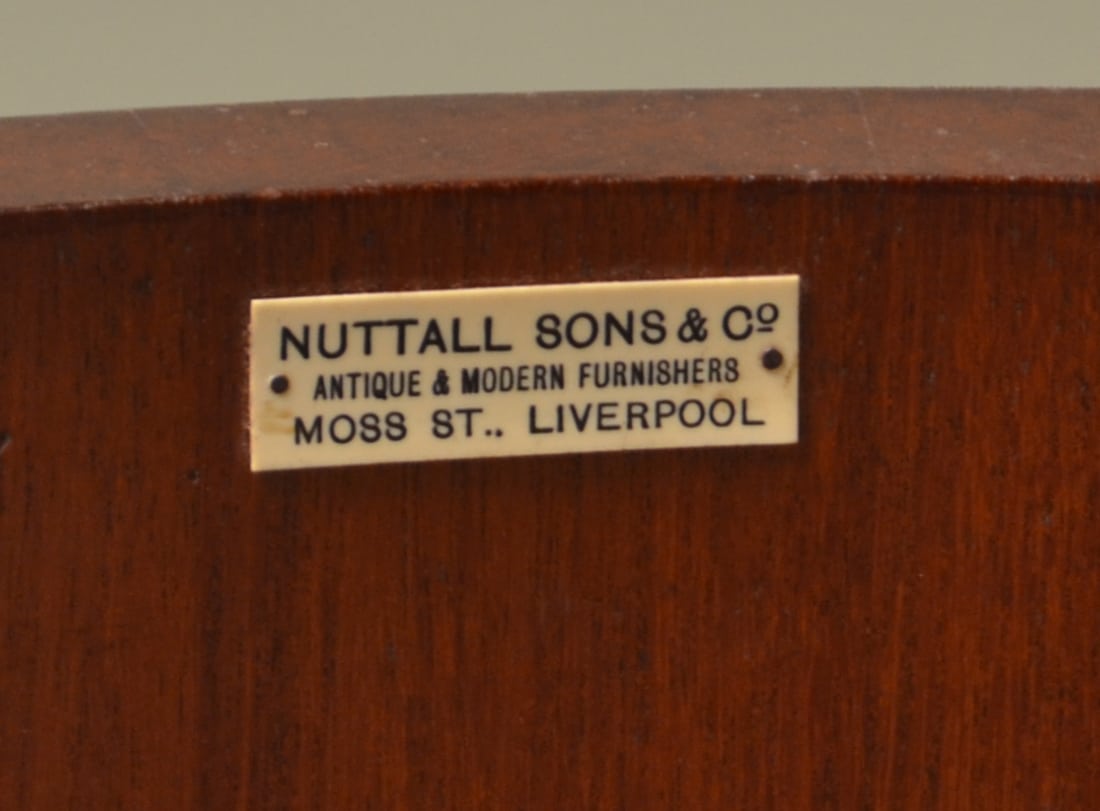
Philips & Jones Wolverhampton – Although there is not much information about these cabinet makers, they really did build some beautiful pieces in the the mid – late 19th century. They made impressive pieces with quality carved panels and figured burr walnut like large Victorian Triple Wardrobes.
Ray & Miles – Late 19th Century and early 20th Century cabinet and furniture makers from Liverpool. House Furnishes and decorators.
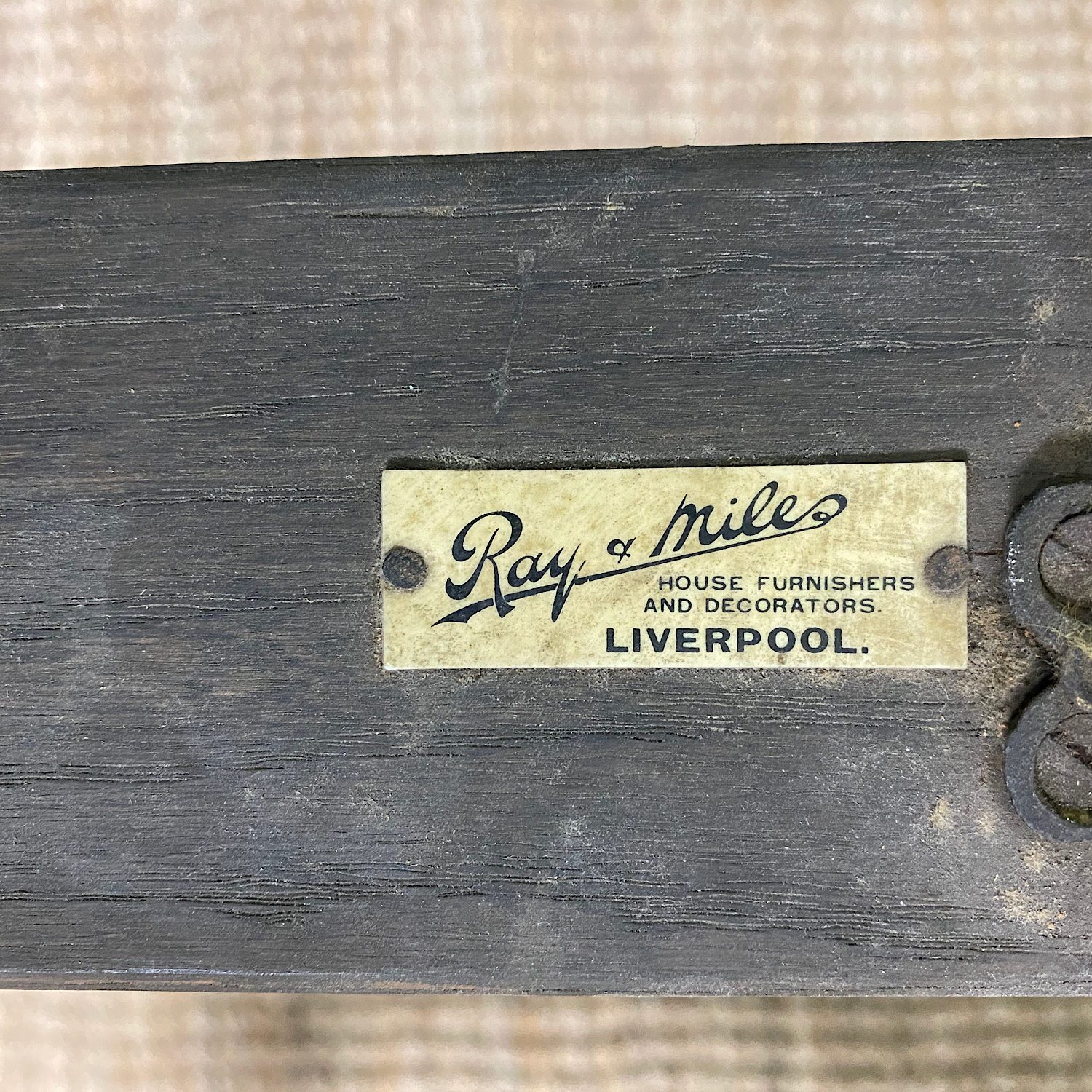
Rayner & Co – Cabinet makers Aldersgate st London

R. Garnett and Sons – 19th century cabinet makers, established 1824 and based in Warrington.
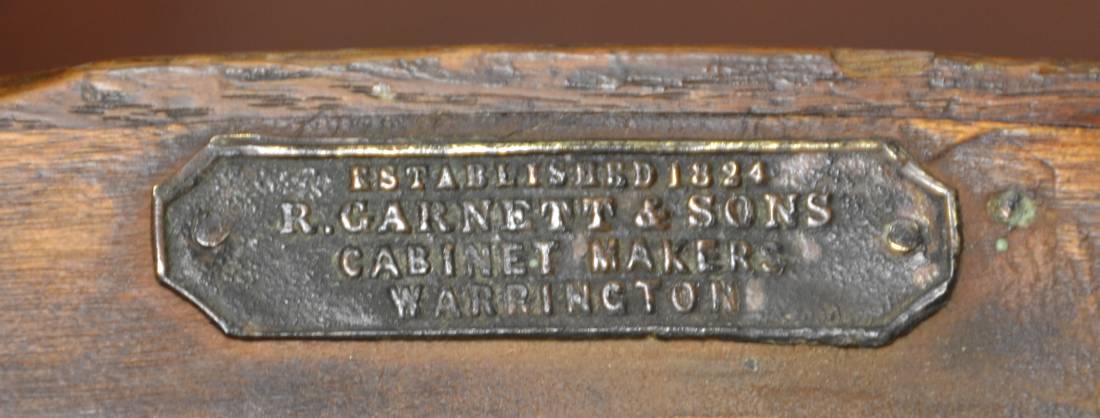
Roodhouse & Sons, Leeds – Mainly built Victorian furniture, especially writing tables.
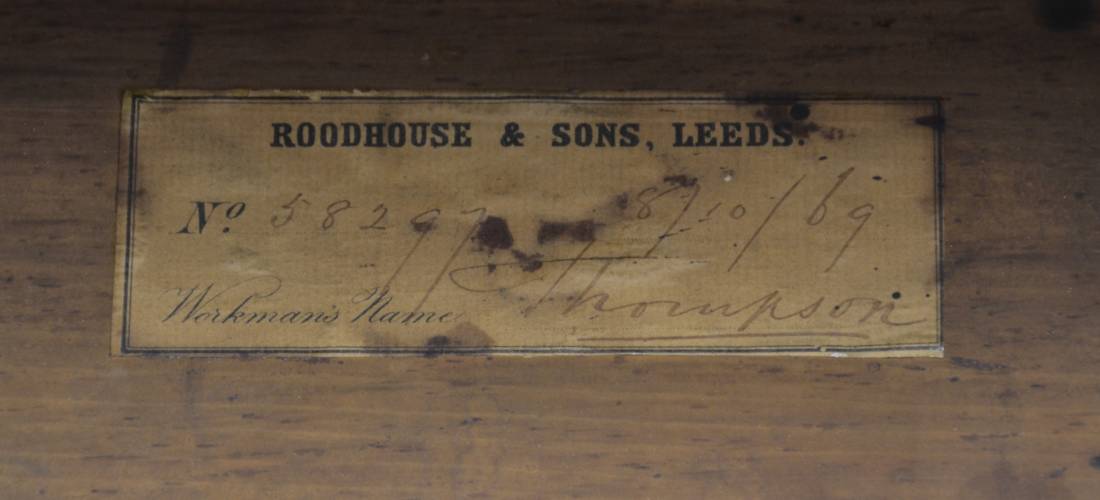
Richardsons & Sons of Hull – Richardson & Sons were the most prestigious furniture makers in Hull in their prime. They were even appointed as upholsterers to King Edward VII in their later years having already been commissioned to make chairs for Queen Victoria, Prince Albert and the Prince of Wales during a visit they made to Hull.

Richardson Leeds – W.Richardson was based in Leeds Yorkshire and were cabinet makers and upholsterers. They specialised in wind out extending dining tables in Oak timbers.
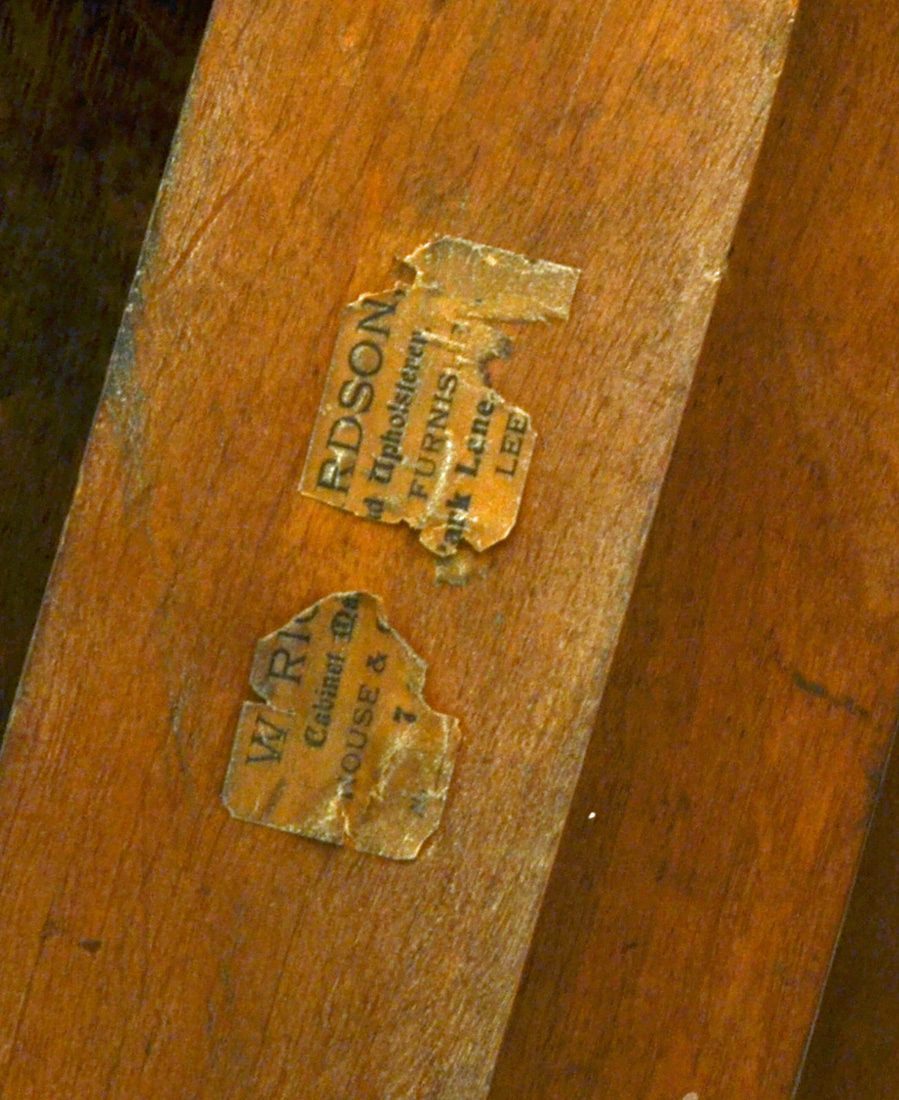
Riley and Co – Makers of late 19th century chairs, often with Arts And Crafts Influences. The choice of wood used was often solid walnut and they liked to add simple carved decoration to the backs.
Robson and Sons – Originally based in a small house at 42 Northumberland Street in Newcastle-on-Tyne. Robert Robson started the business in 1835 until it was taken over by the Maple Group in 1953.

Selbat – From the late 19th century and early 20th century, they made quality extending dining tables with wind out mechanisms and dining chairs.
Simpoles of Manchester – specialist office furniture manufacturer, established in the late 19th Century and one of the leading office furniture manufacturers of the 1930s.
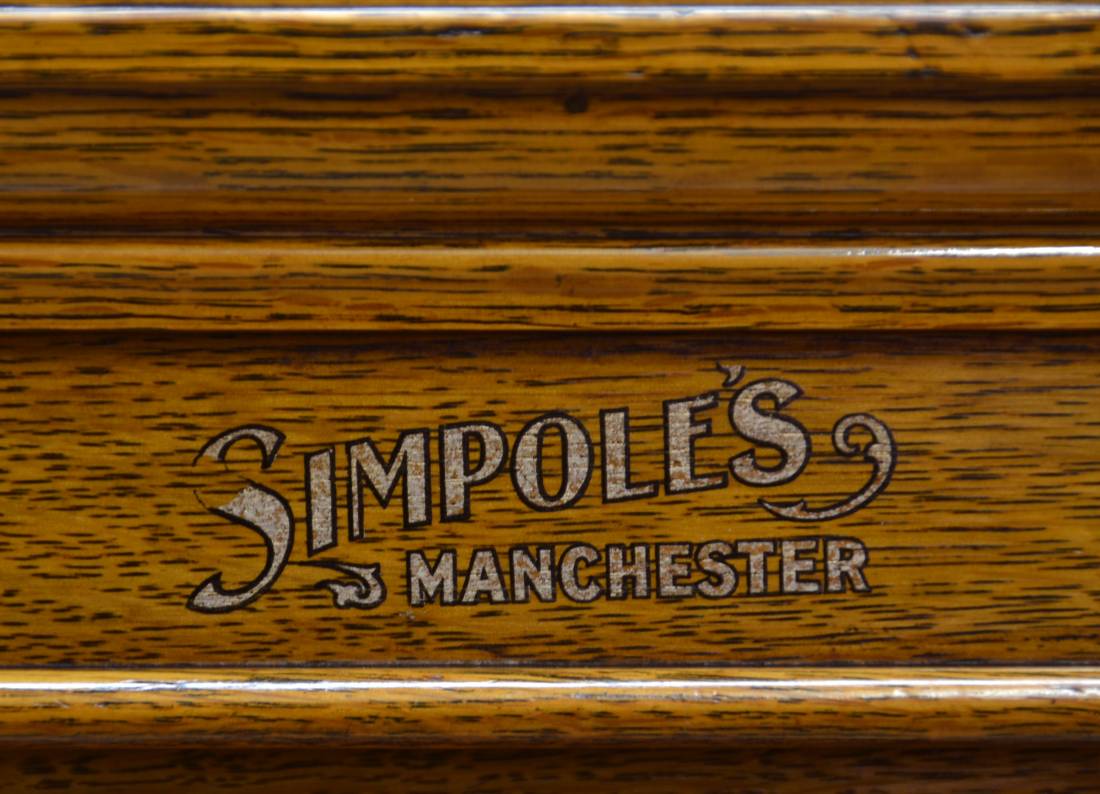
Shapland & Petter – North Devon, Barnstaple. They specialized in Arts & Crafts designs but also made more traditional antique furniture. Established by Henry Shapland in ca.1854.

S & H Jewell – Established in 1830 from their premises at 29-31 Little Queen Street, Holborn, London and then later to Parker Street, LONDON. W.C.2. They were also renowned for restoring and selling older pieces of antique furniture in their shop.
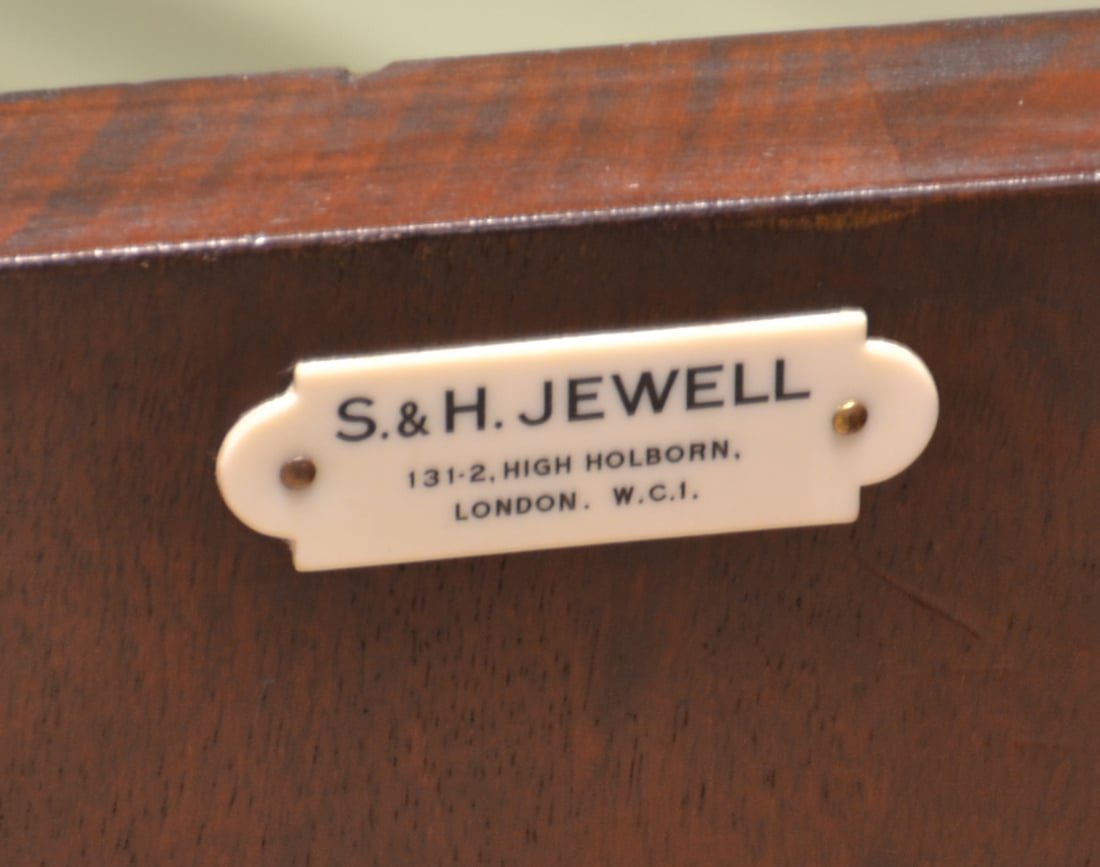
S.J.Waring & Sons – Cabinet Makers by appointment to the Queen – Bols St – Liverpool. They later joined with Gillows to become Waring and Gillows.

Selbat – Made quality Extending Dining Tables from the late Victorian period and Edwardian periods.
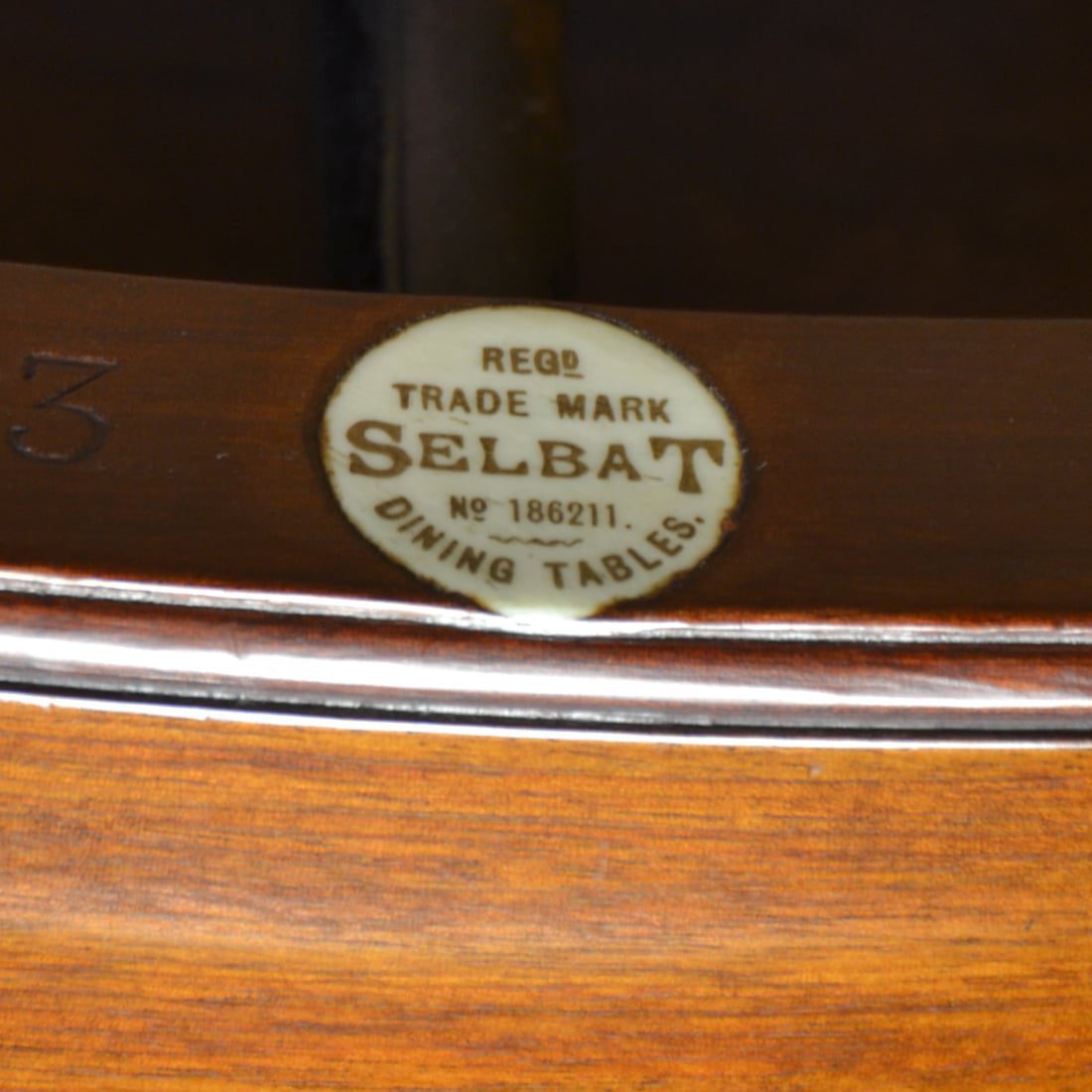
Simkin – Based in Colchester, they often made Adam Design Victorian furniture like this pair of Mahogany Antique Console Tables.
Sopwith & Co Of Newcastle – Made nice linen presses and other bedroom pieces.
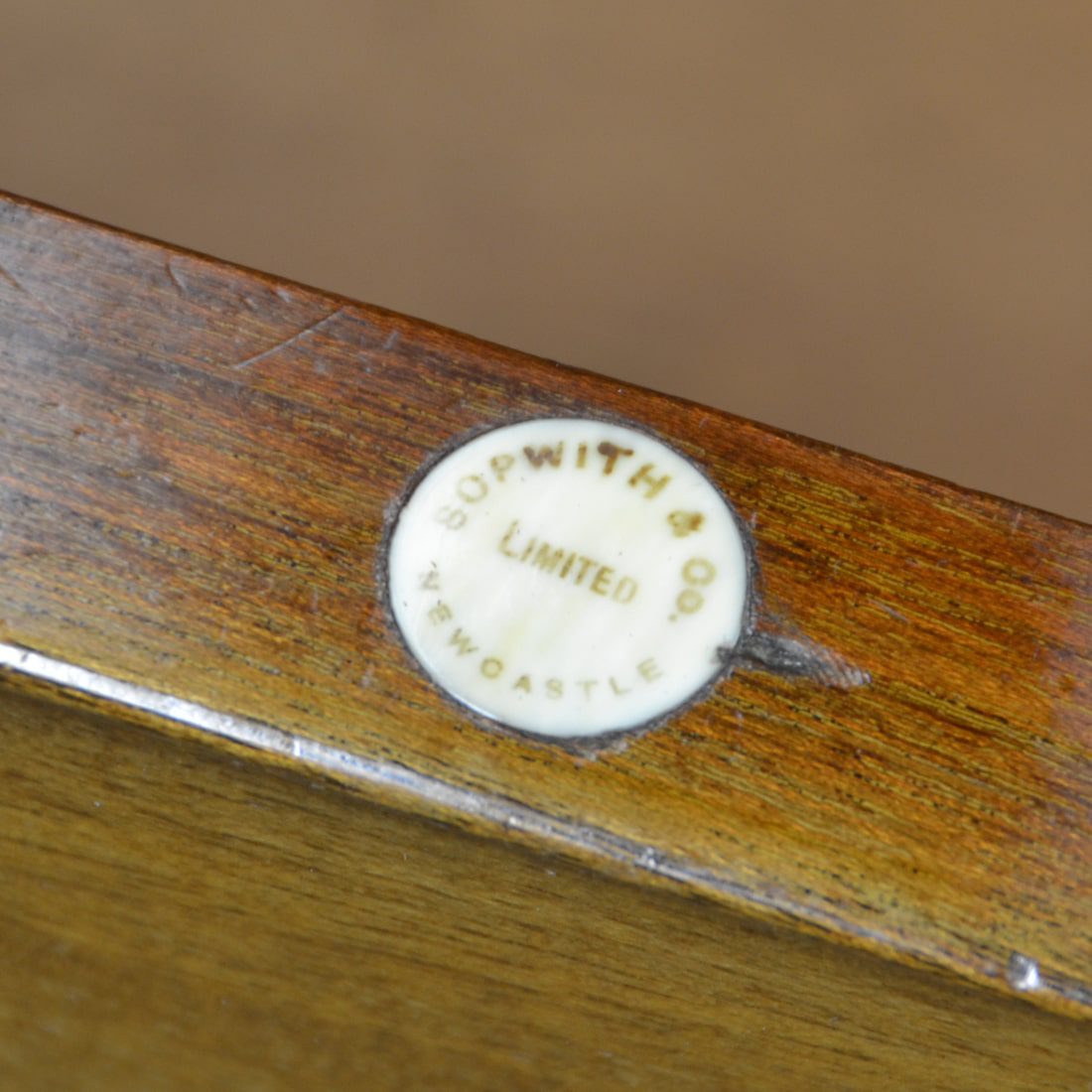
T. Justice and Sons – Scottish cabinet makers based in Dundee, they were established in 1903 and specialised in reproducing period design furniture.

Watajoy – They made vintage travel trunks (steamer trunk by Watajoy) designed to survive the trials and tribulations that the early 1900’s means of travel had to offer. They have brass claps and key to lock the case and the interiors are fully fitted, encompassing drawers and coat hangers.
W. Fry and Co Dublin – 31 Westmoreland Street, Dublin: ‘Artistic Furniture, Woven Printed Fabrics, Carpets, Floorcloths, Wallpapers, Bedding and Bedroom Furniture’
![]()
W. Priest – 1 & 2 Tudor St, Blackfriars. Priest was known as an auctioneer, retailer and appraiser between 1837-1840. His trade label can be found on furniture dating from the late Georgian to mid Victorian period. Labels from his Tudor street address suggest he traded in second hand furniture at the time rather than being an actual cabinet maker himself.
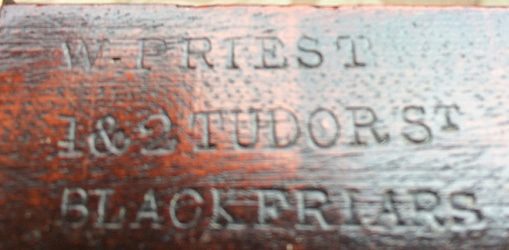
Wilkinson & Son – Established by Joshua Wilkinson in 1766 at 7 Broker’s Row, Moorfields, London. Joshua His son William Wilkinson and cousin, Thomas Wilkinson, were in partnership running the company in 1790. In 1808 William set up on his own at an old established firm of Quentin Kaye at 14 Ludgate Hill and Thomas continued at 10 Broker’s Row until 1828.
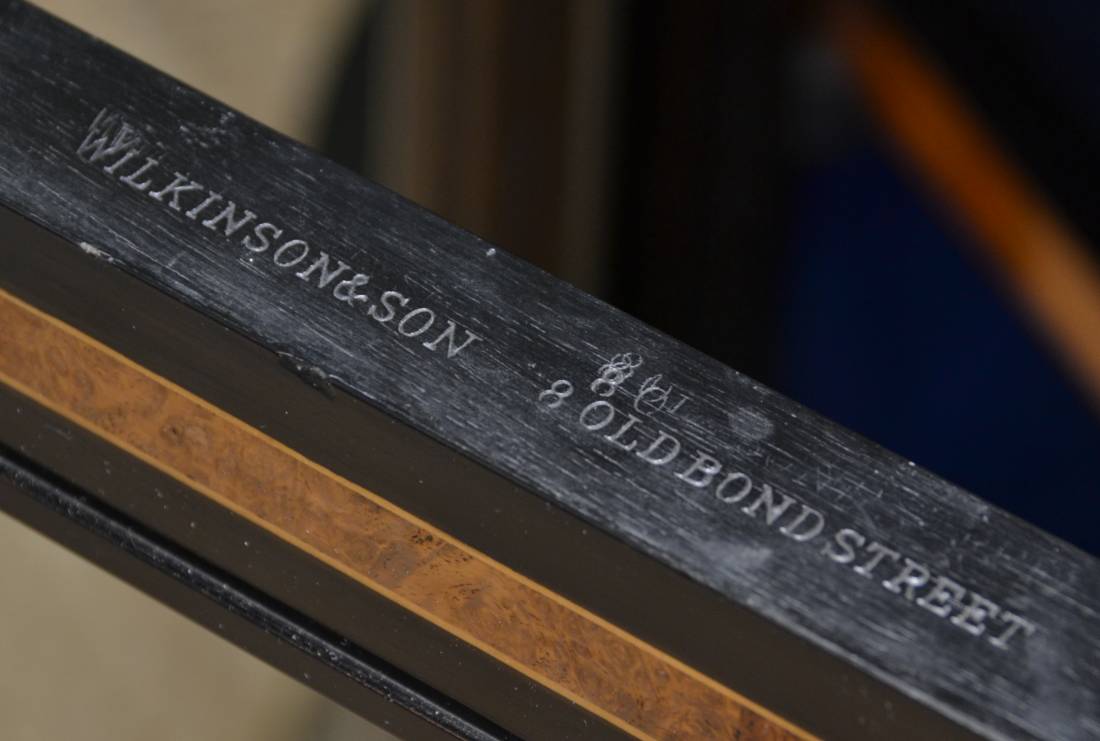
Wylie & Lochhead – Established in 1829 by Robert Wylie and William Lochhead mainly as coffin builders but they quickly became very successful with many workshops and furniture showrooms in Glasgow, Scotland.
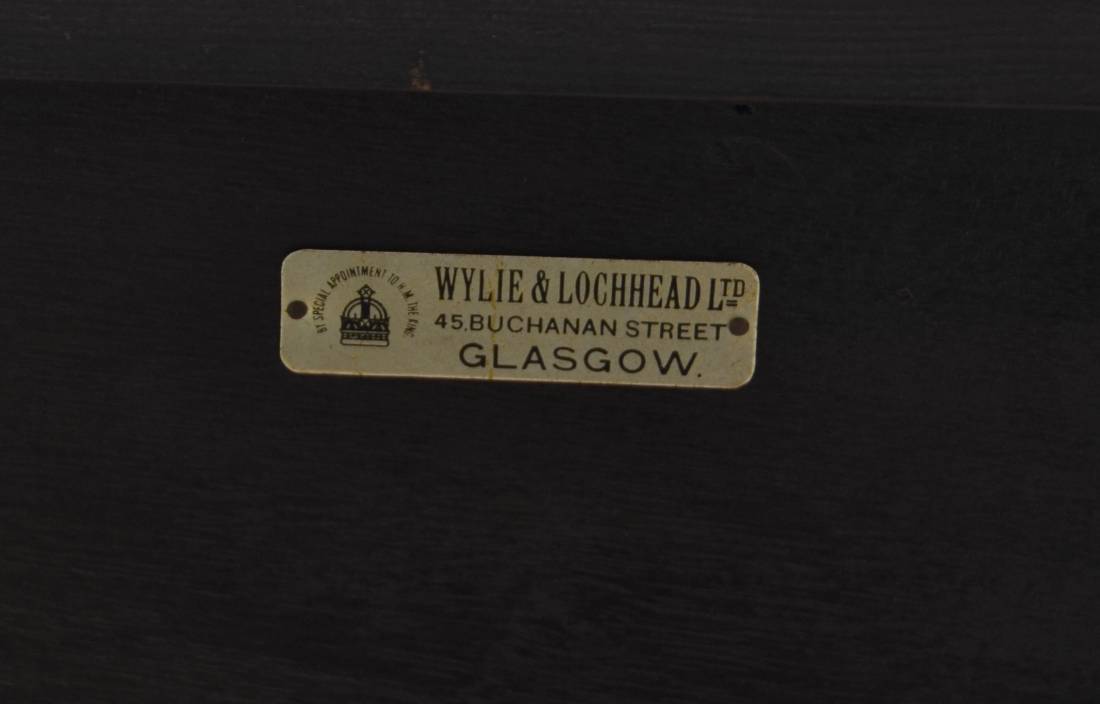

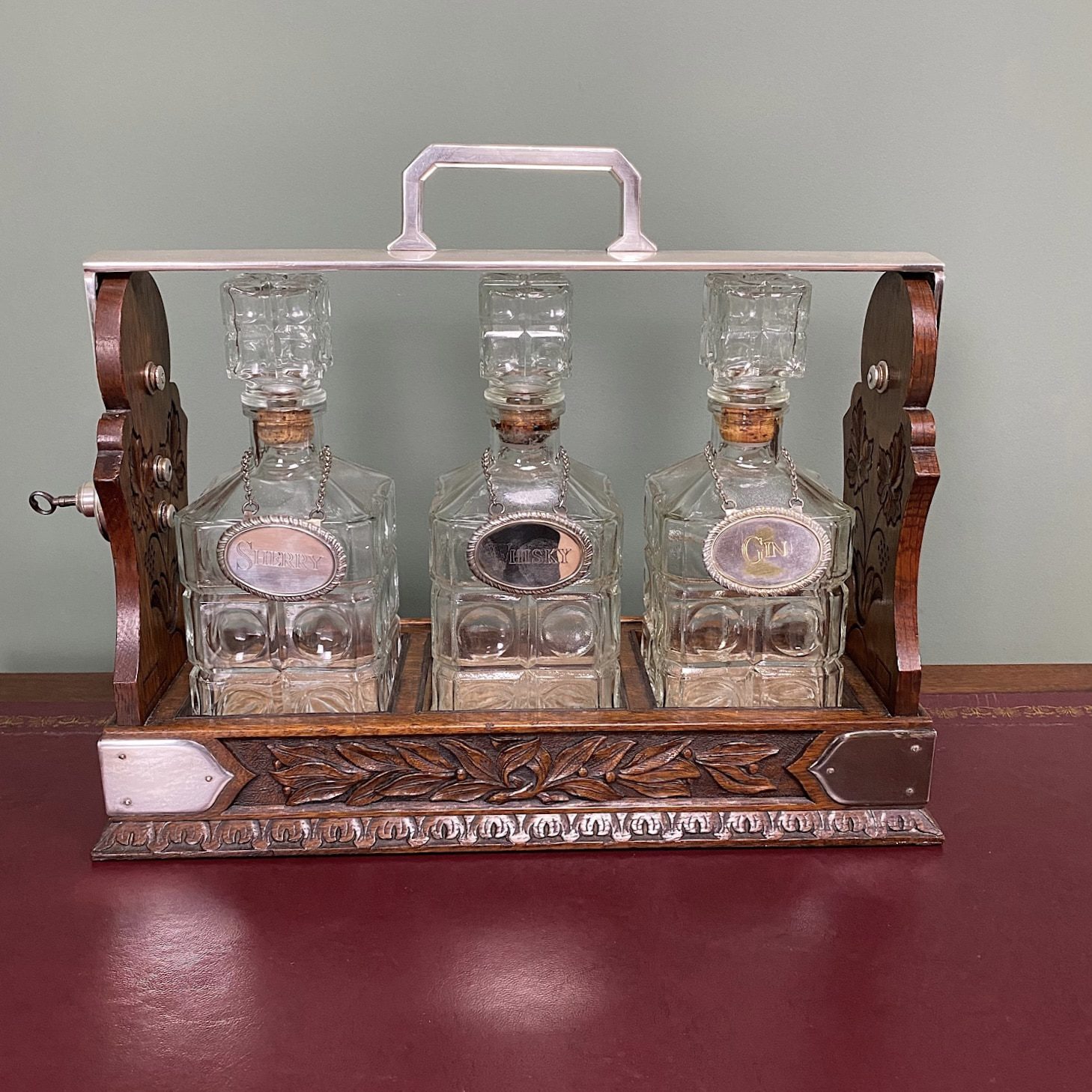
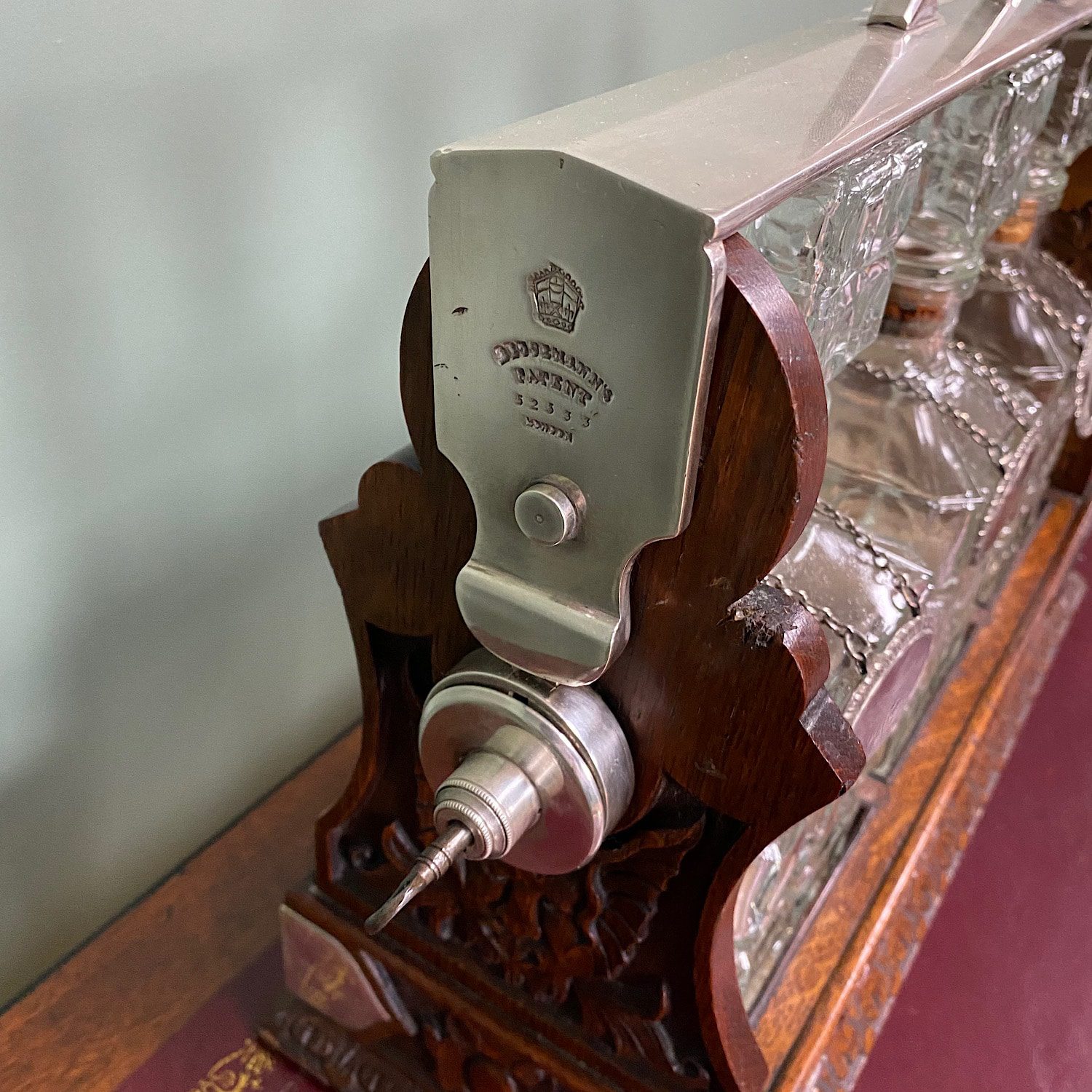
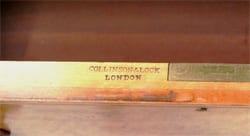
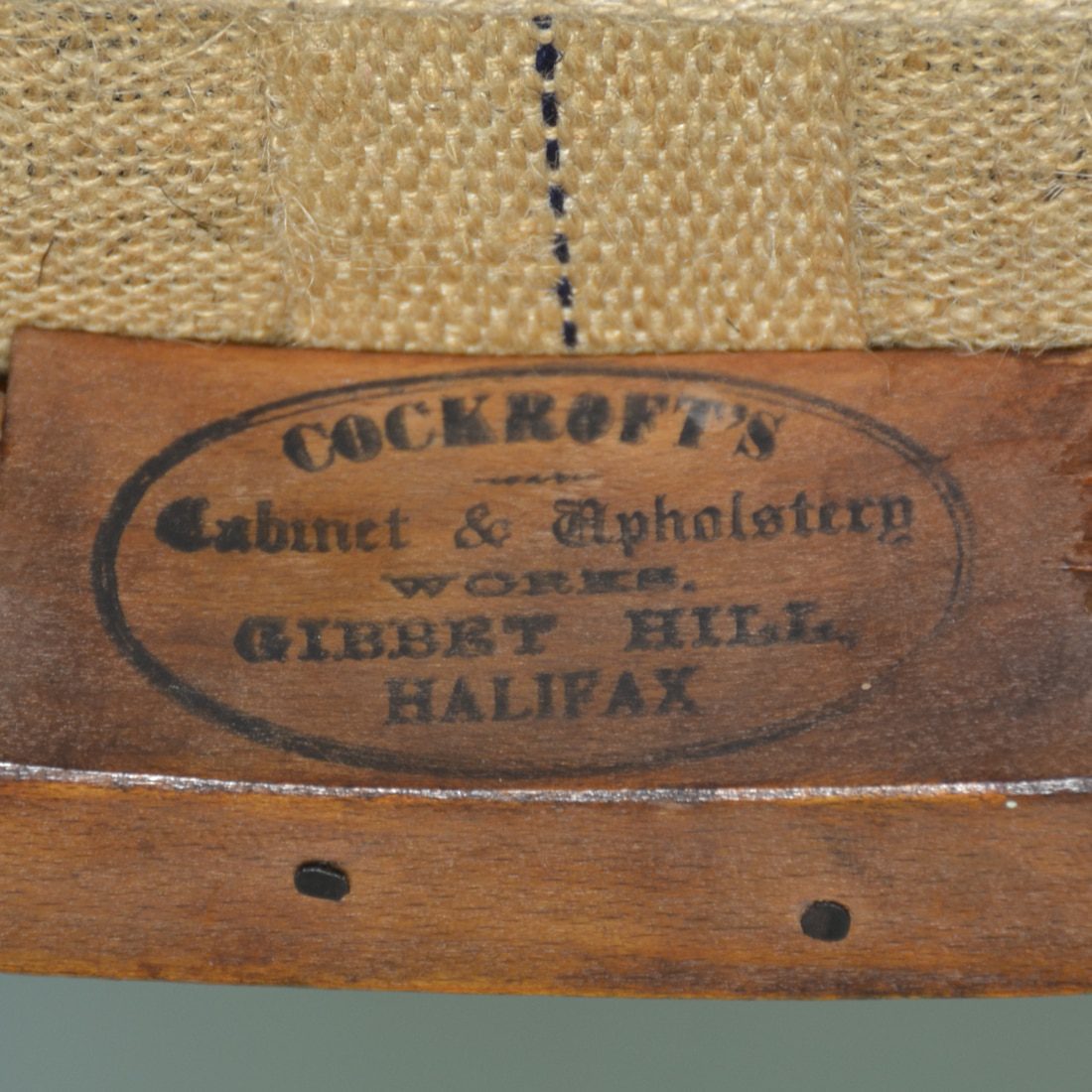

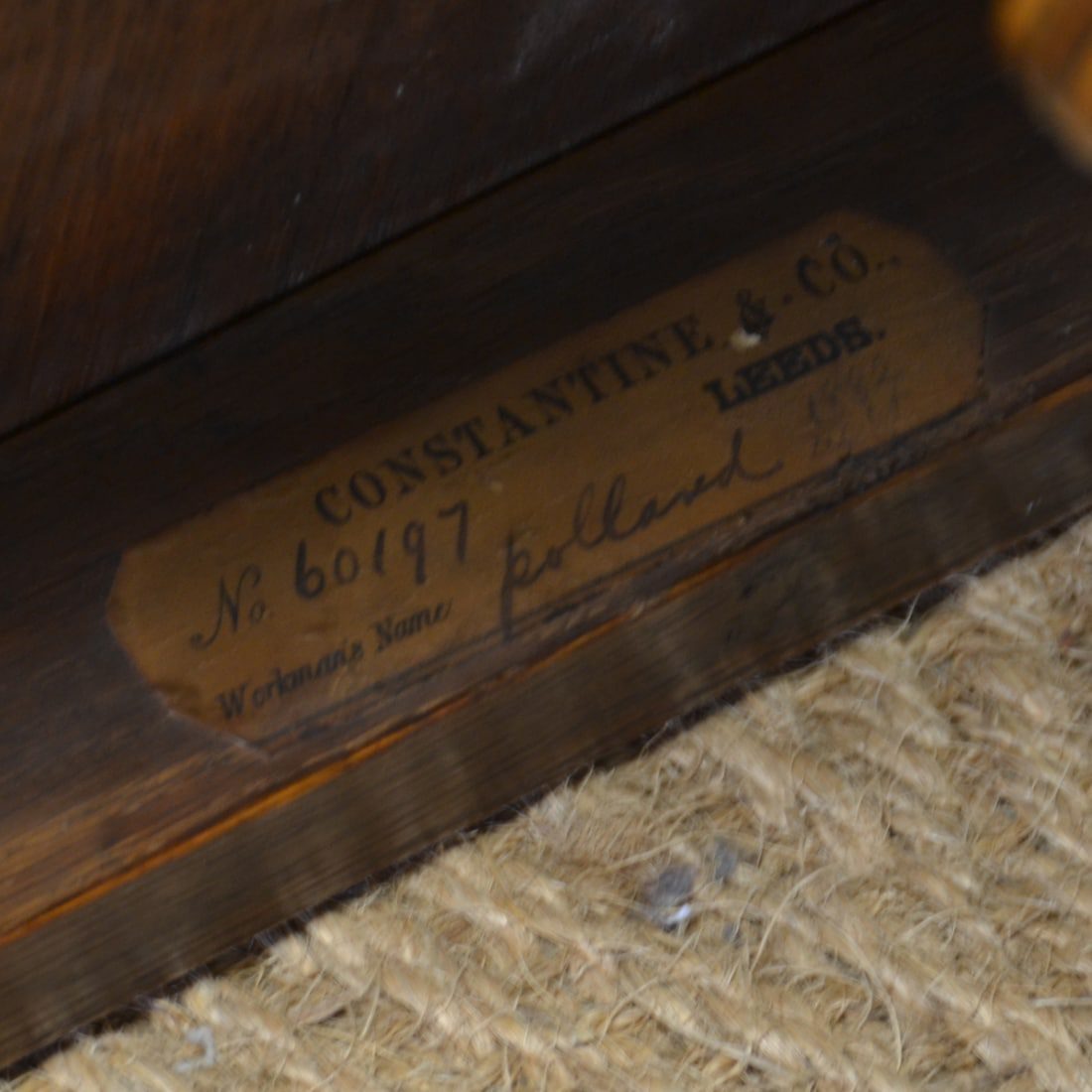
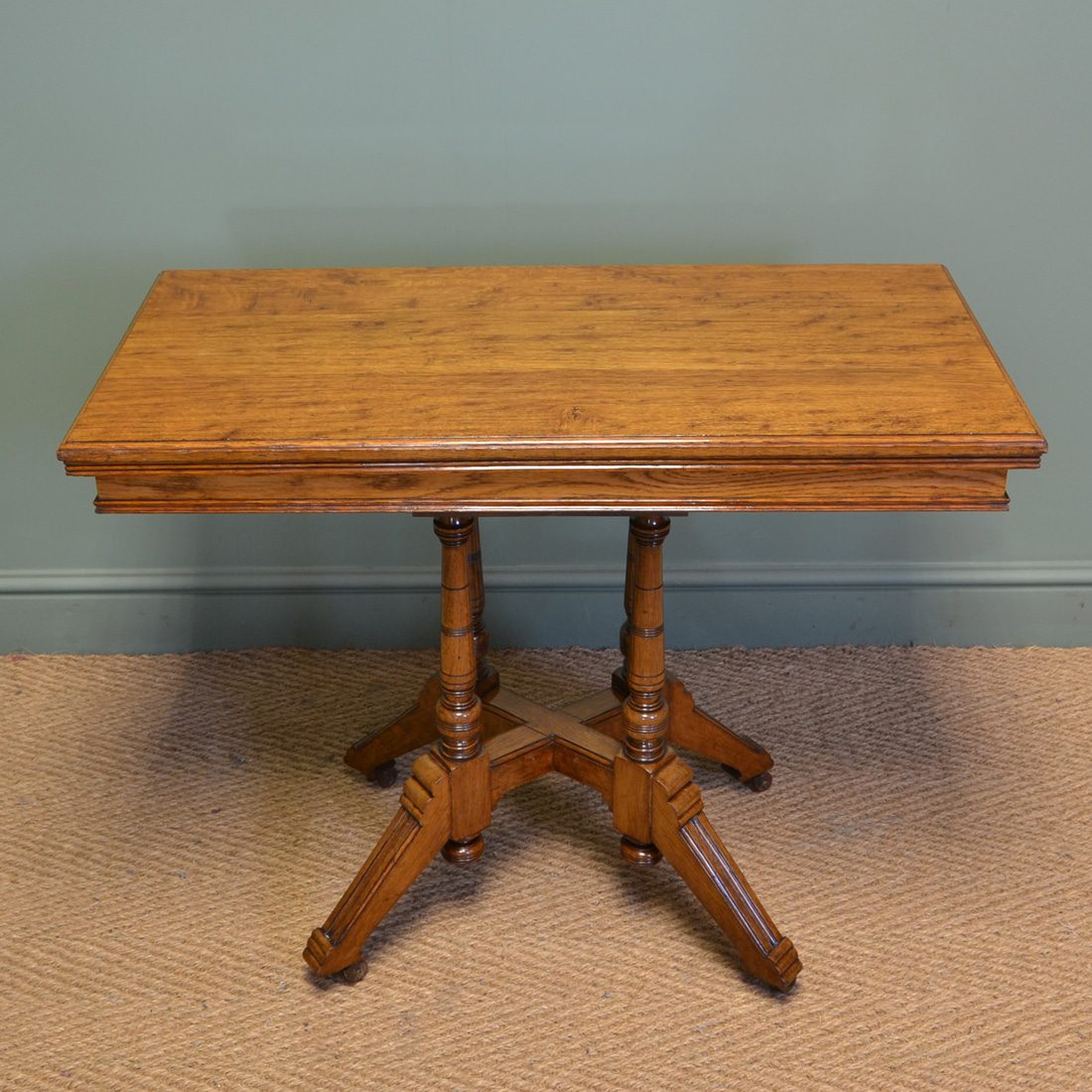

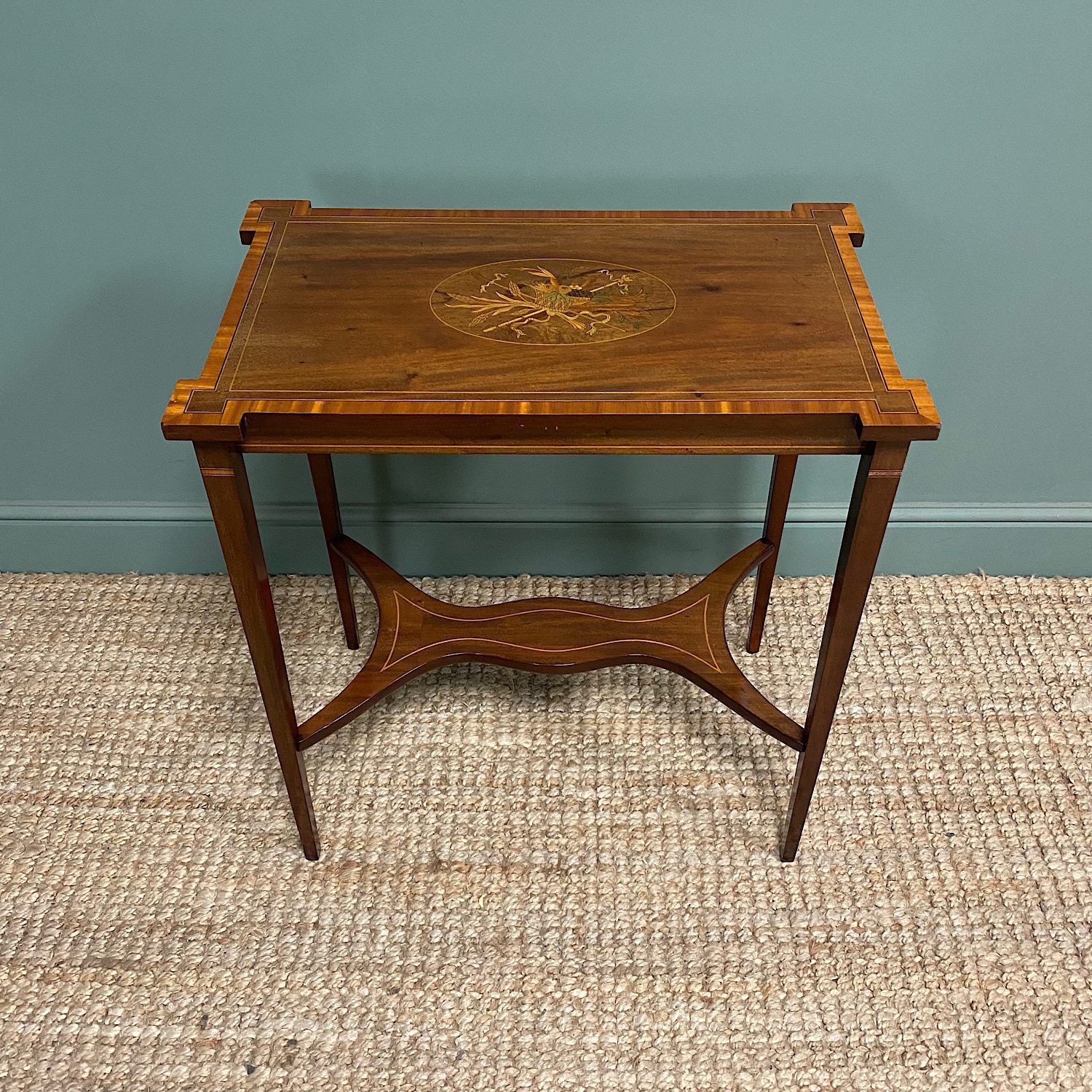
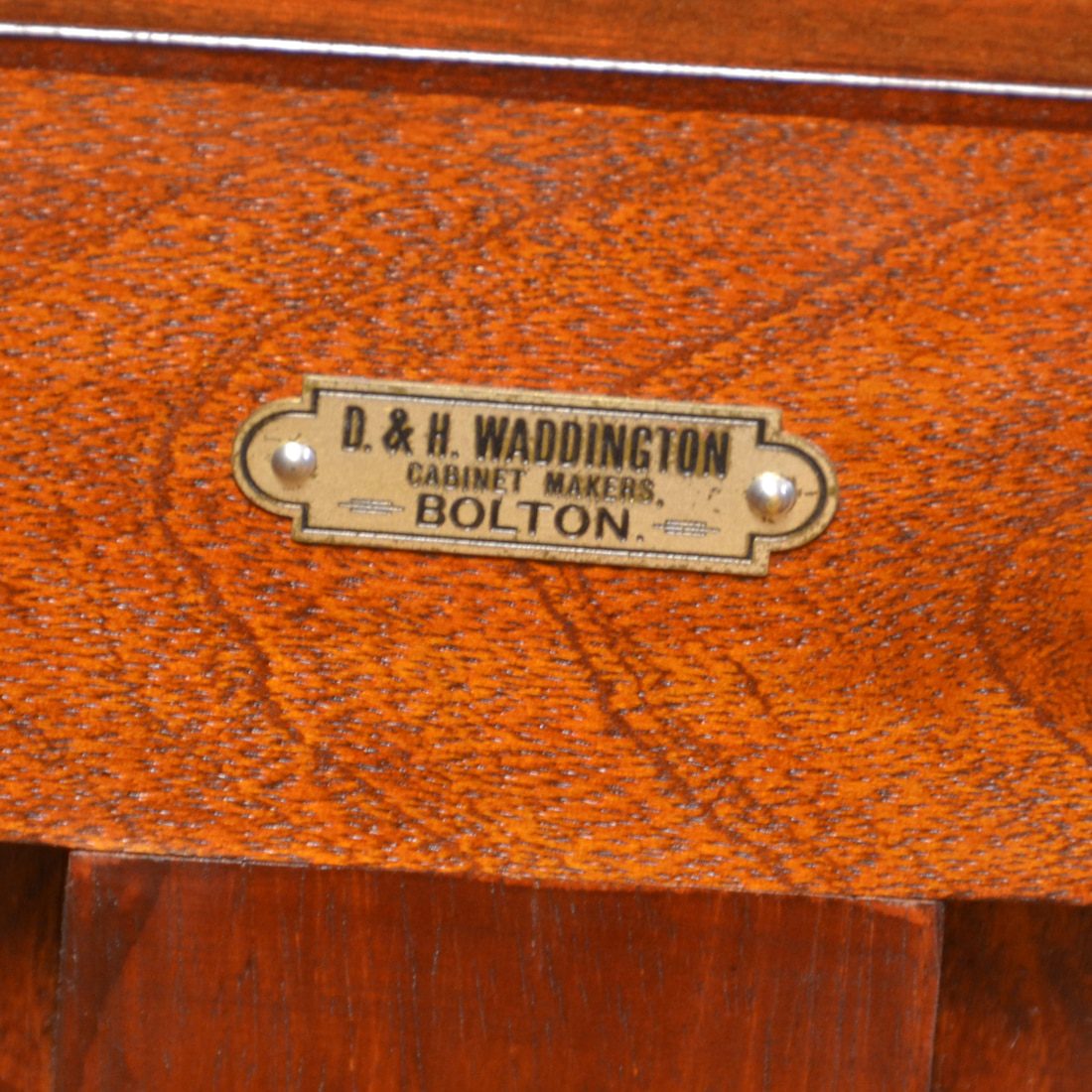
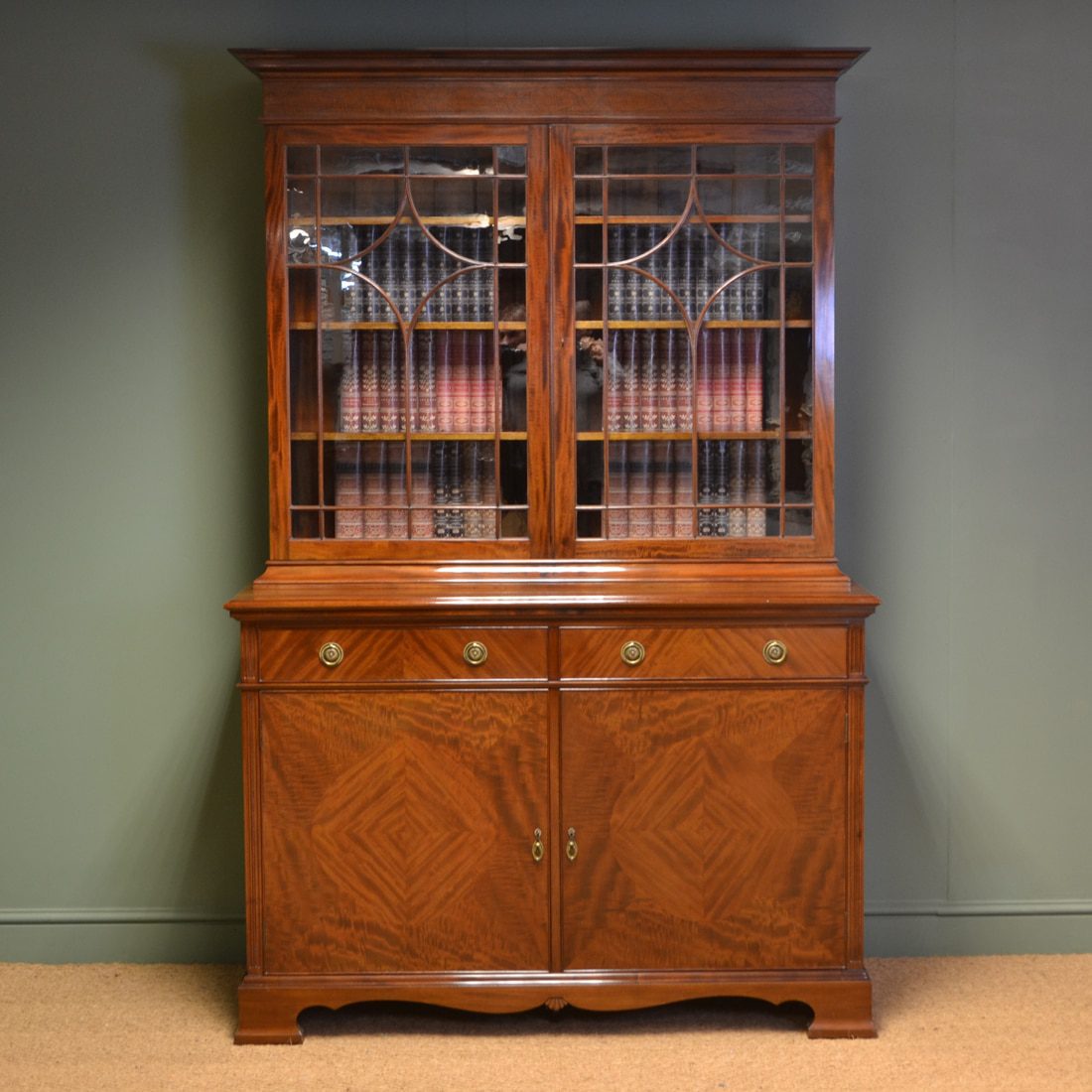

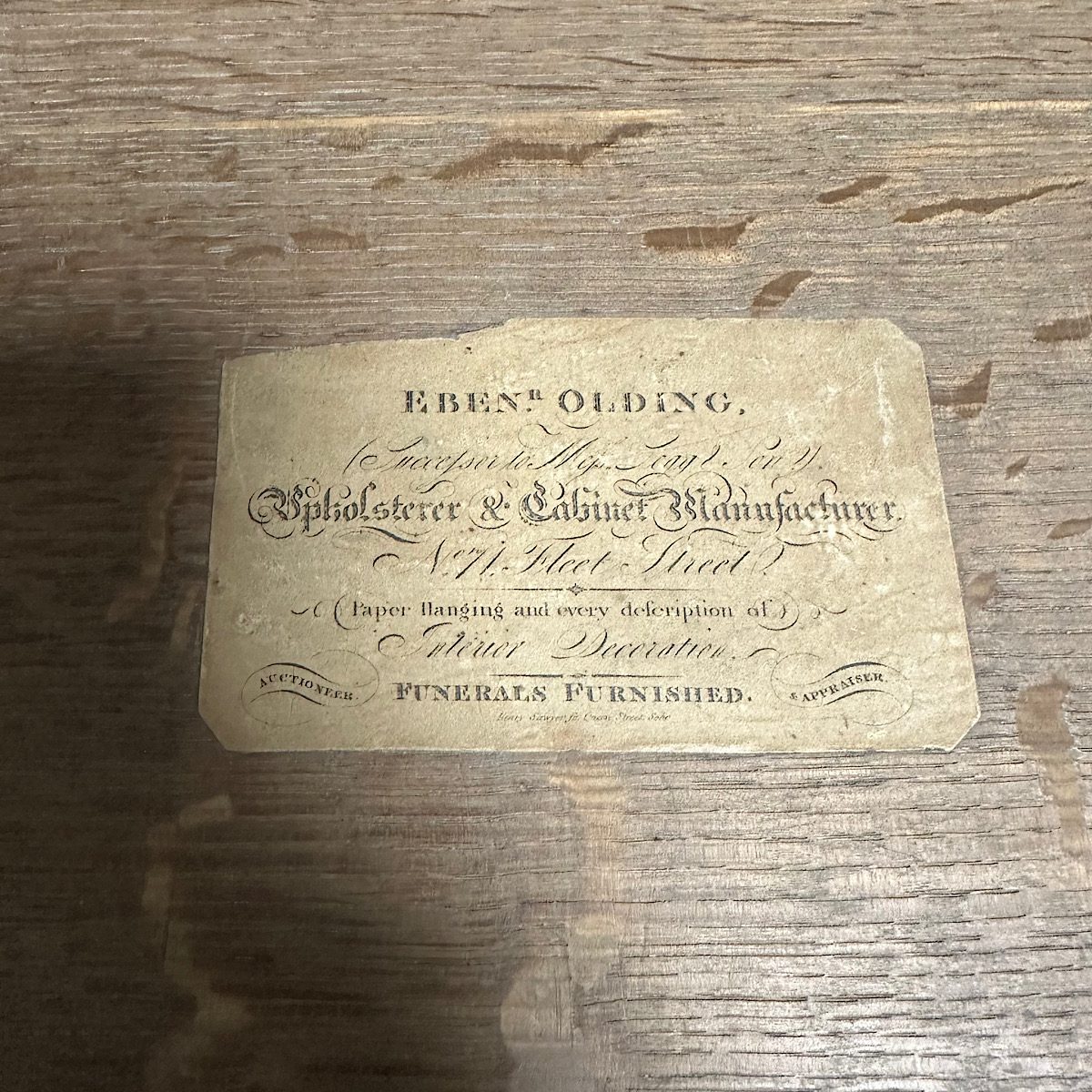

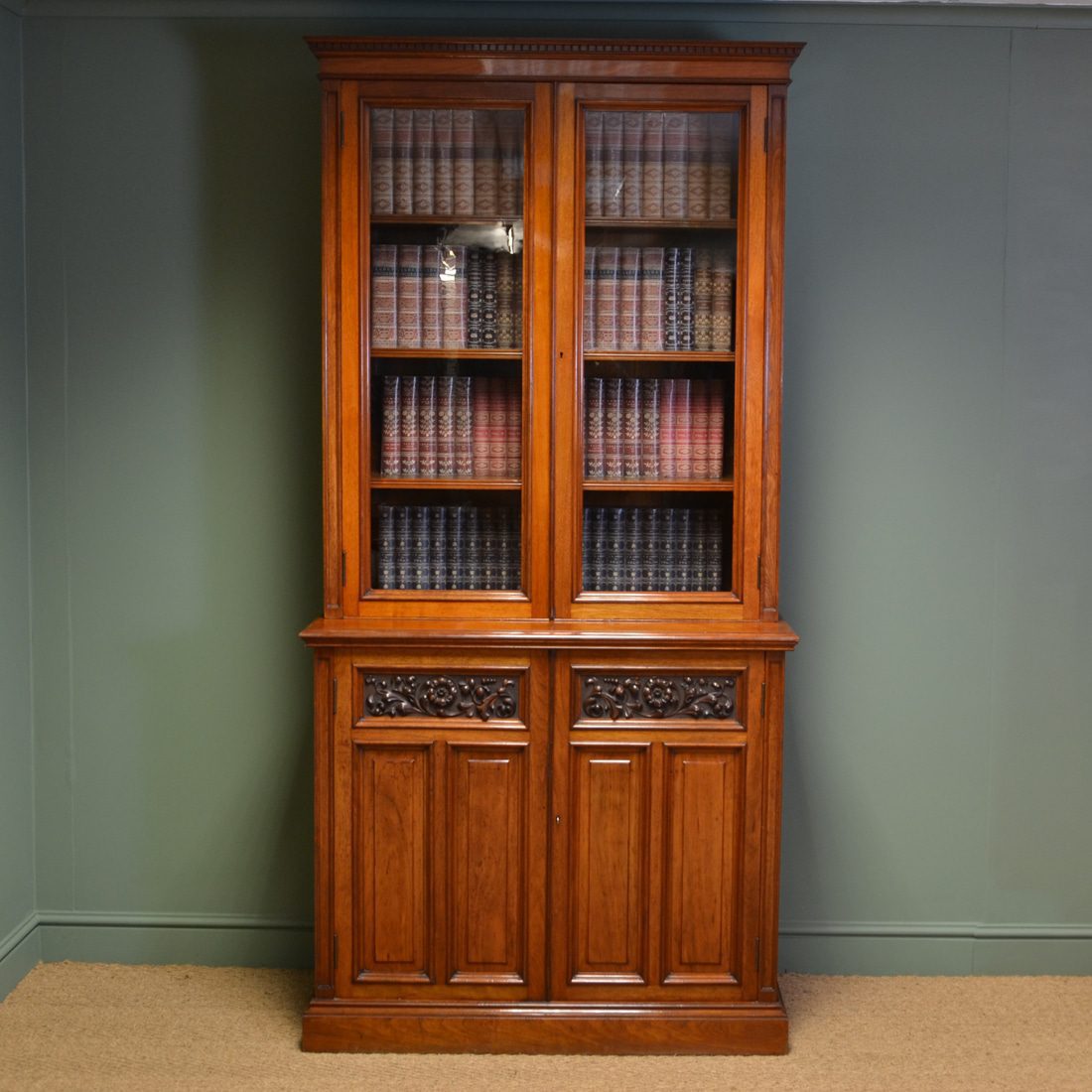
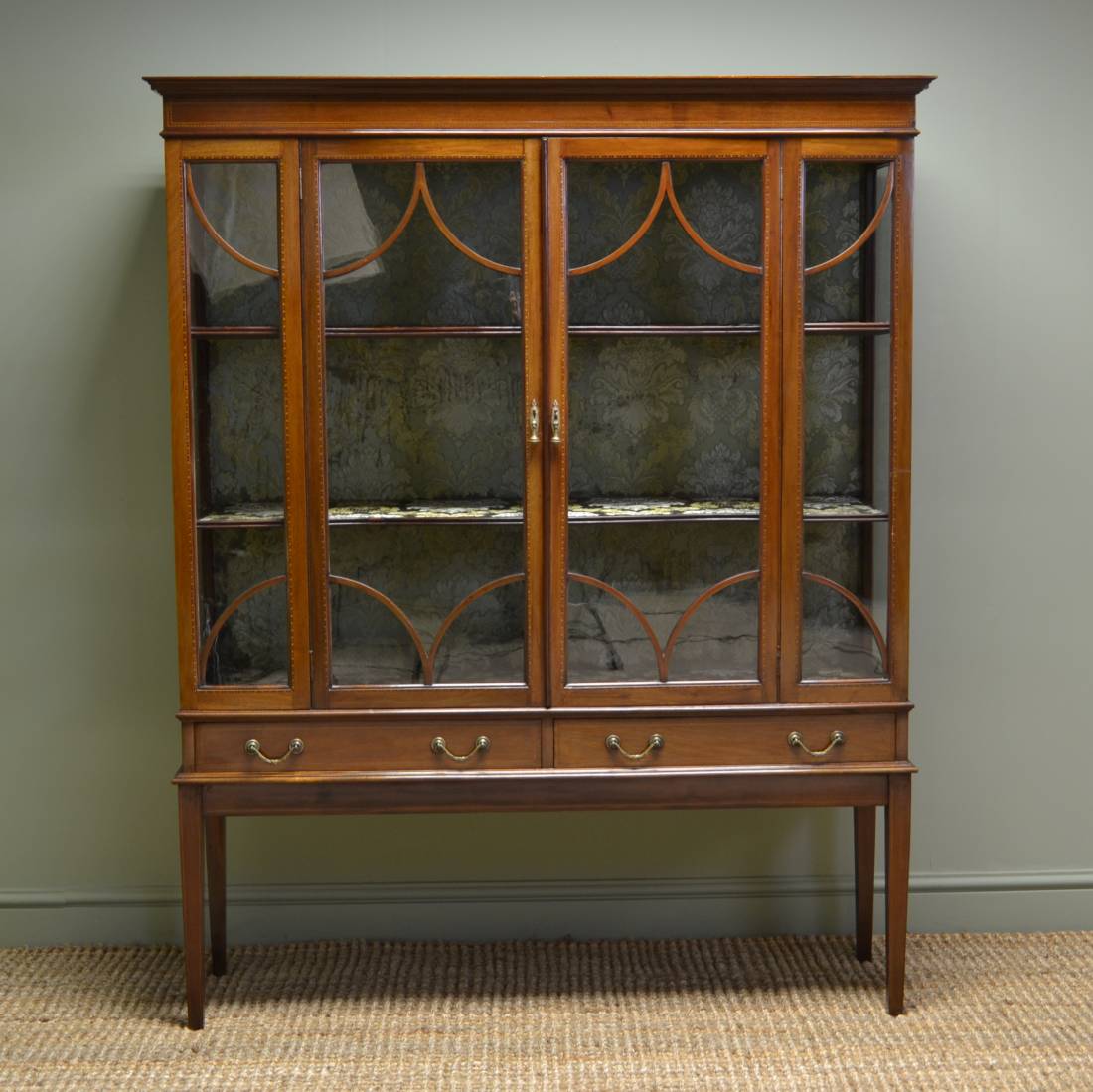
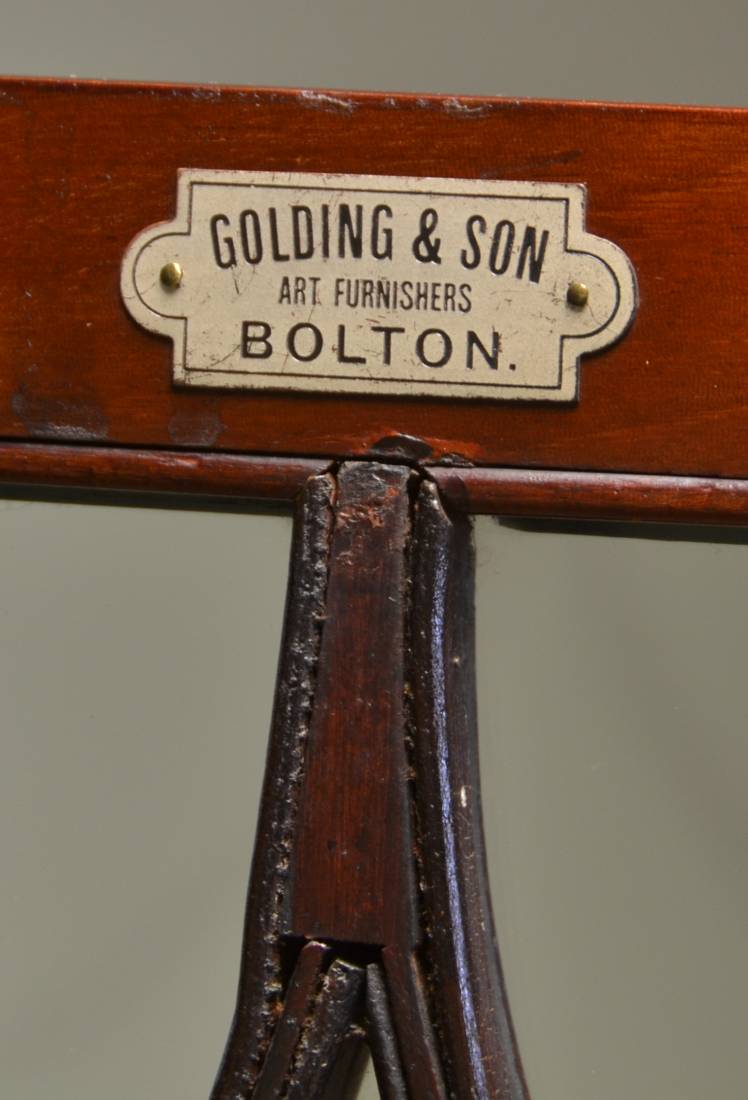
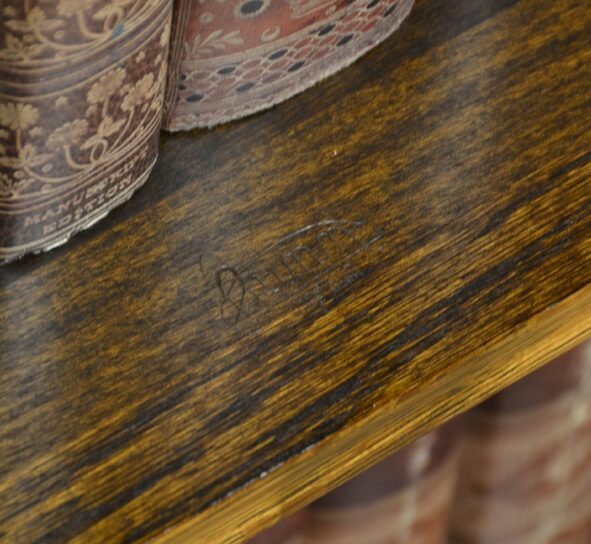
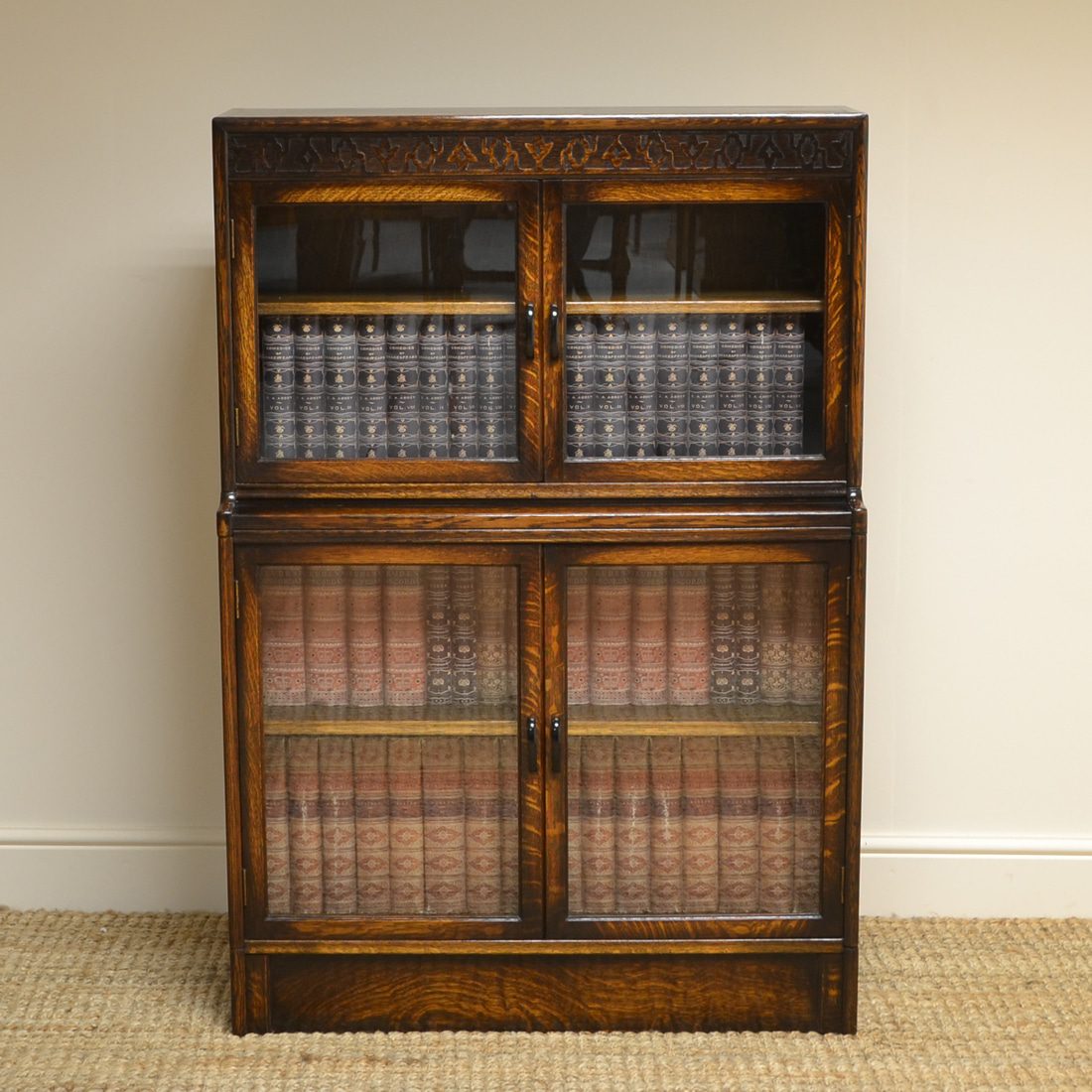


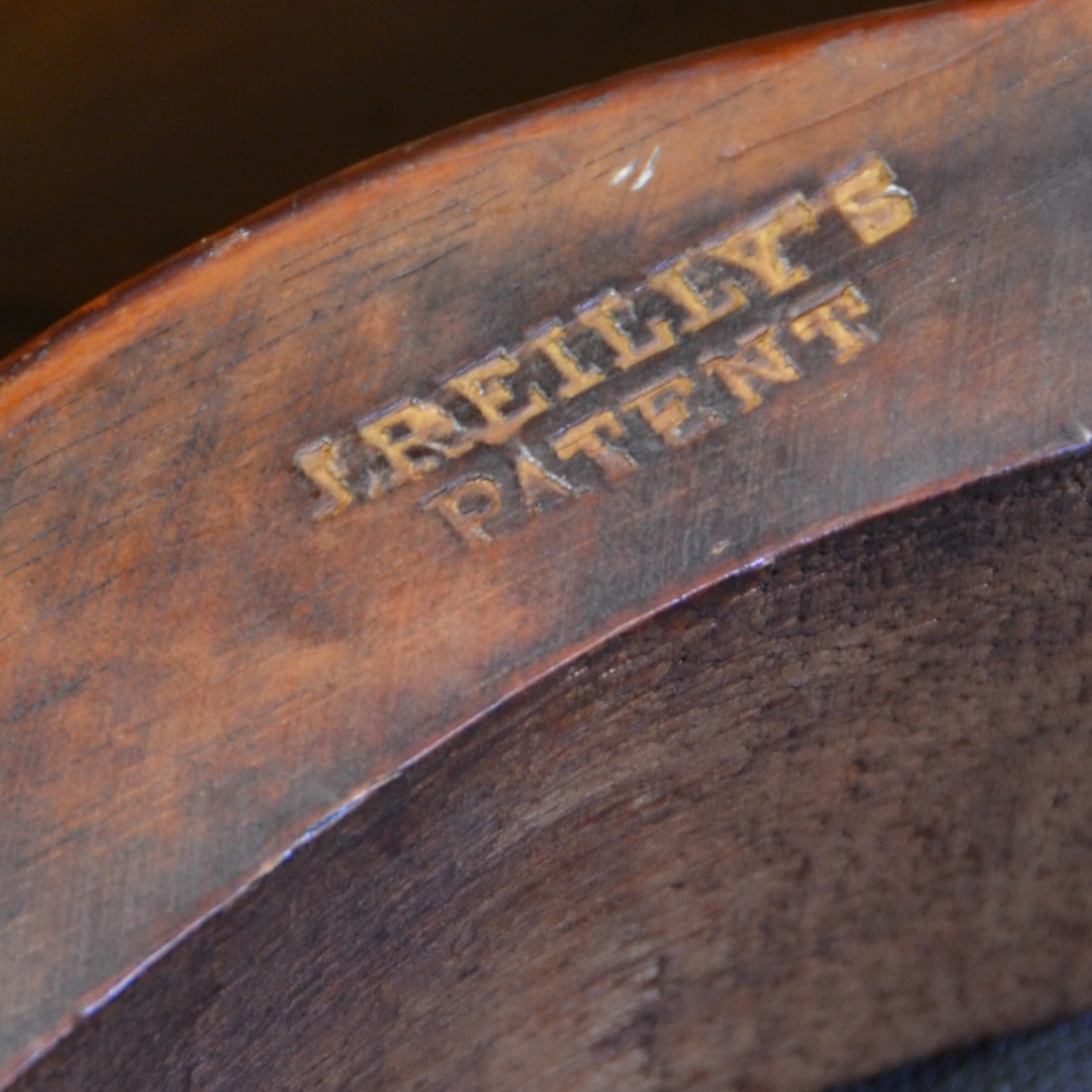

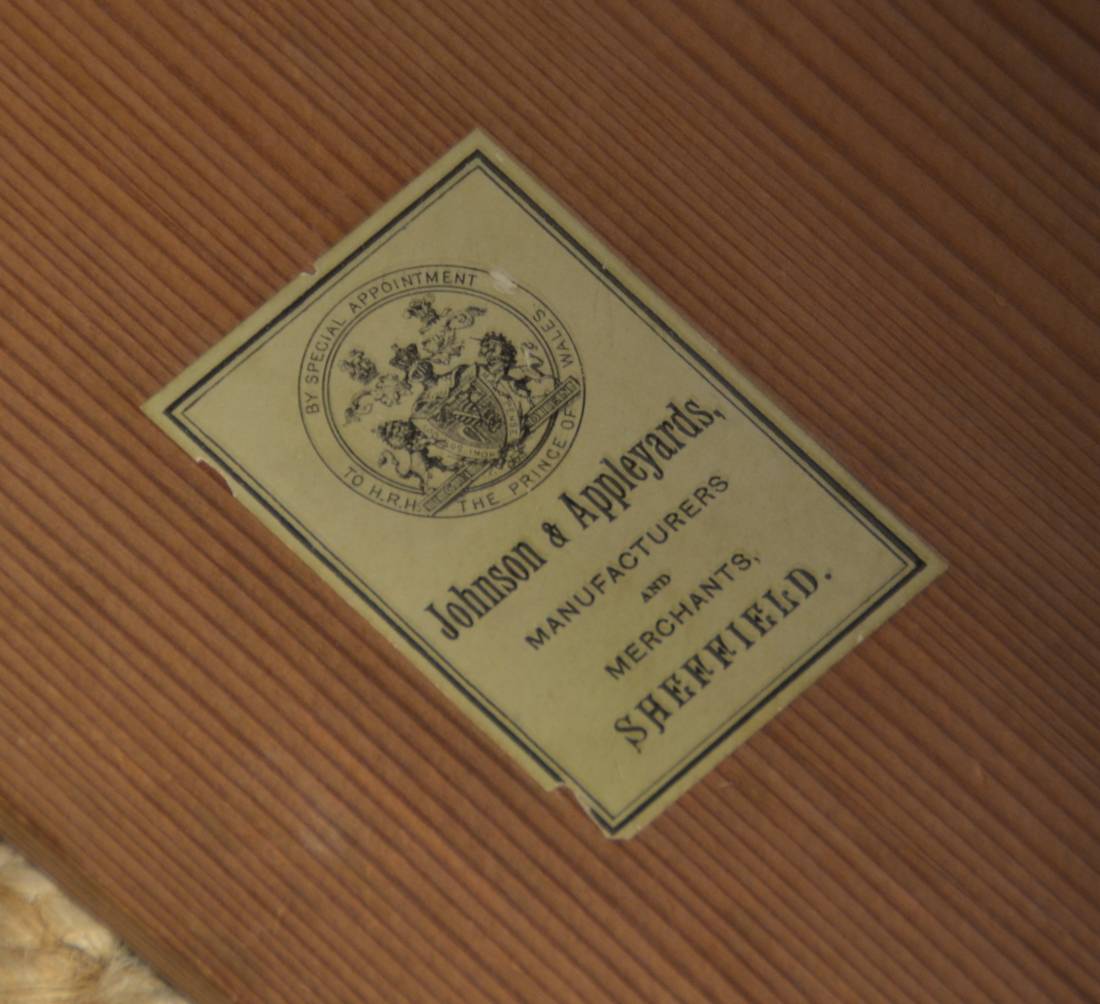
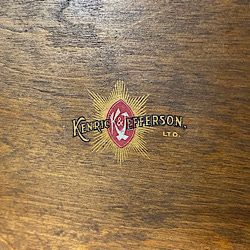
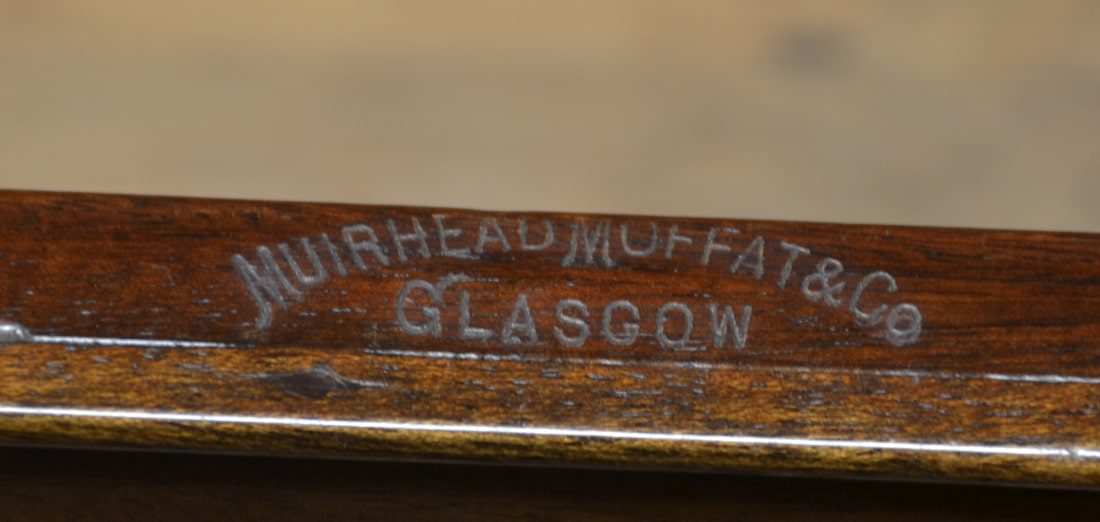
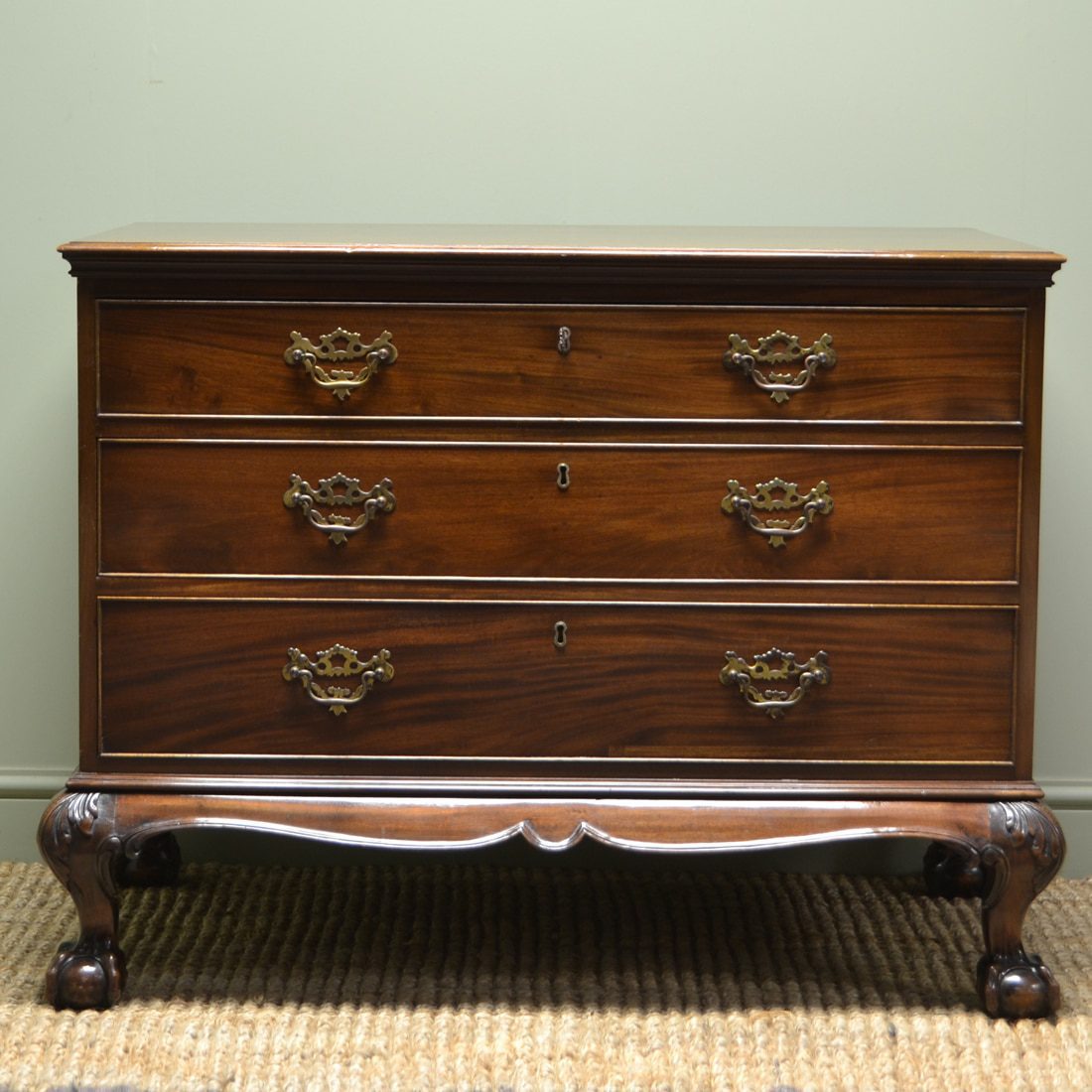
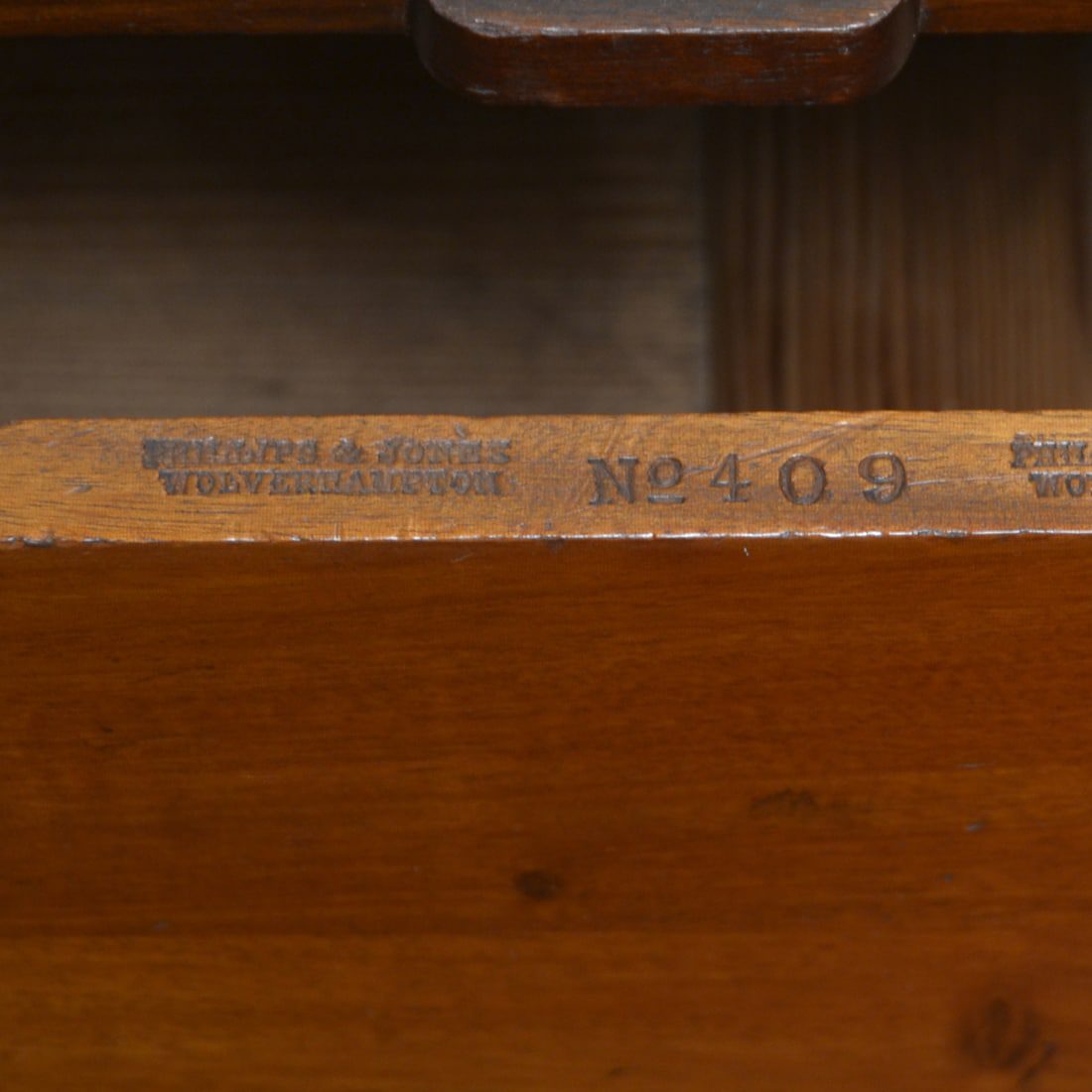
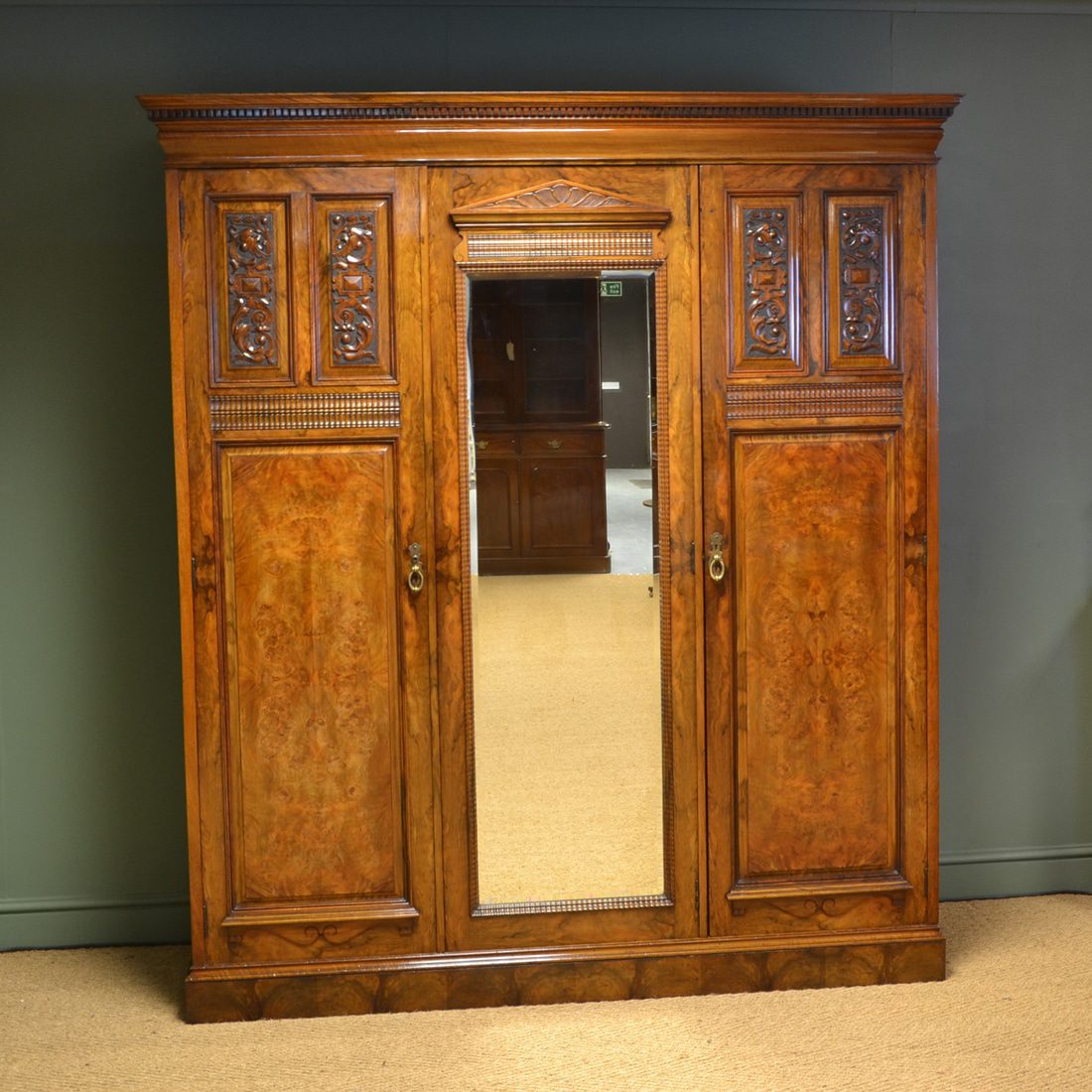
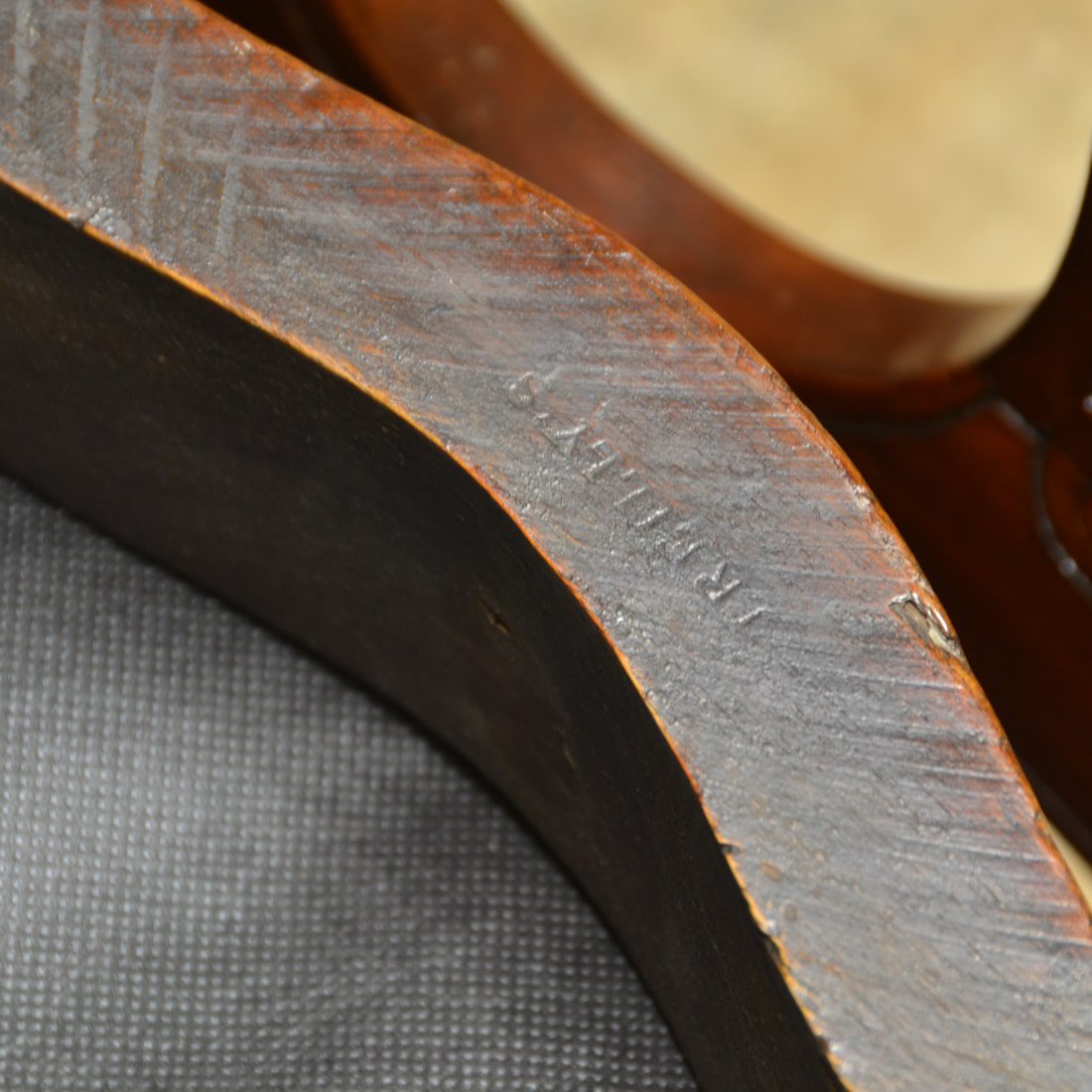
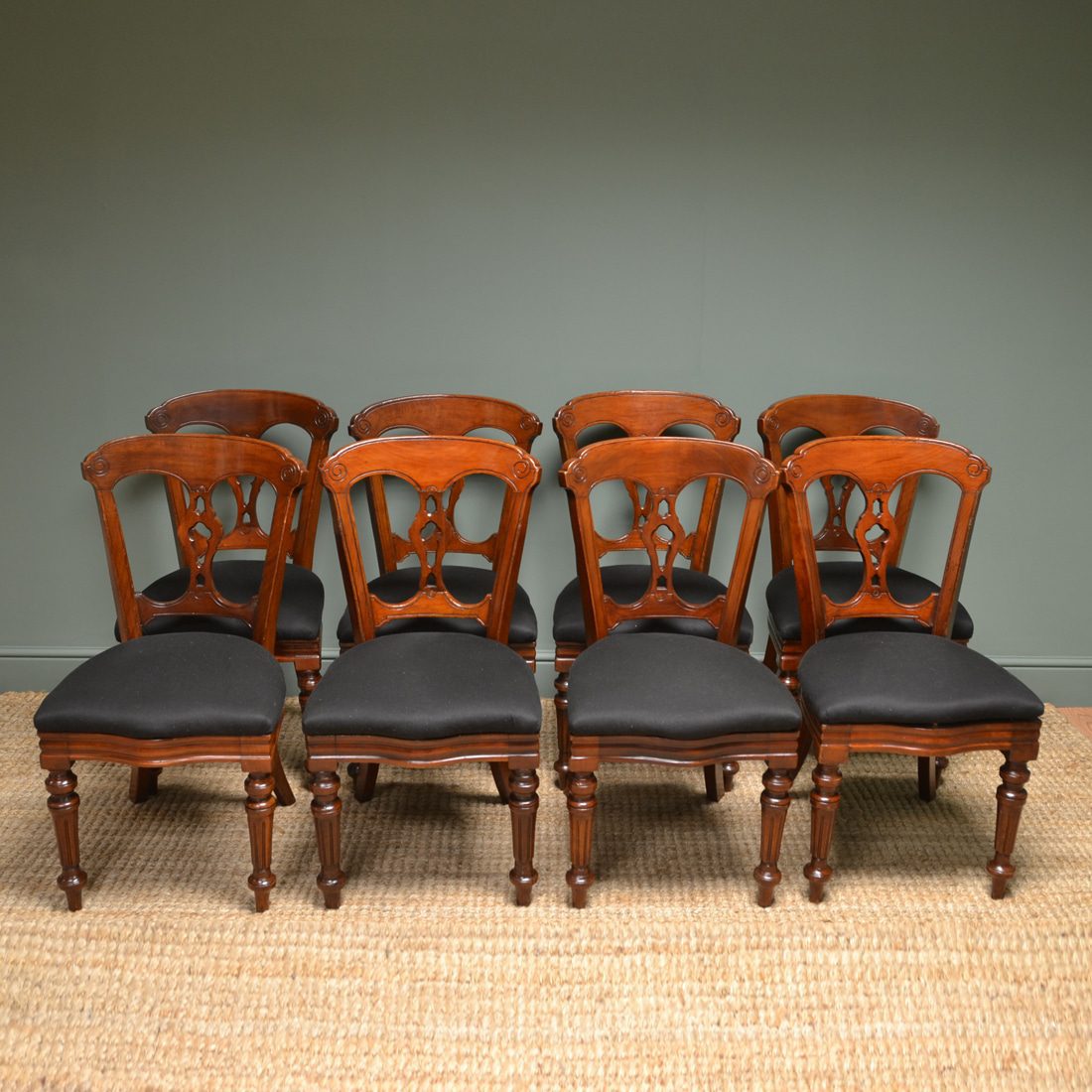

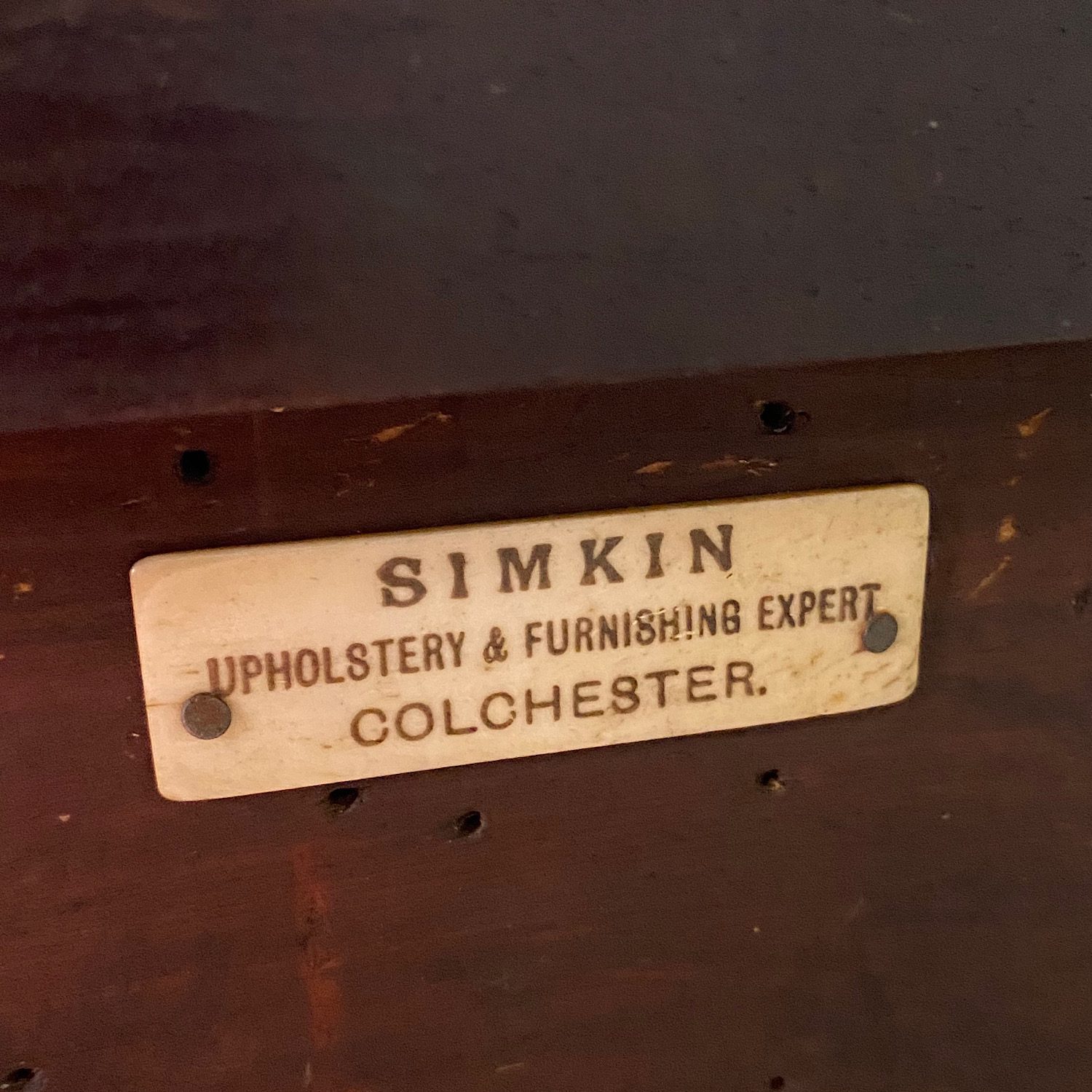
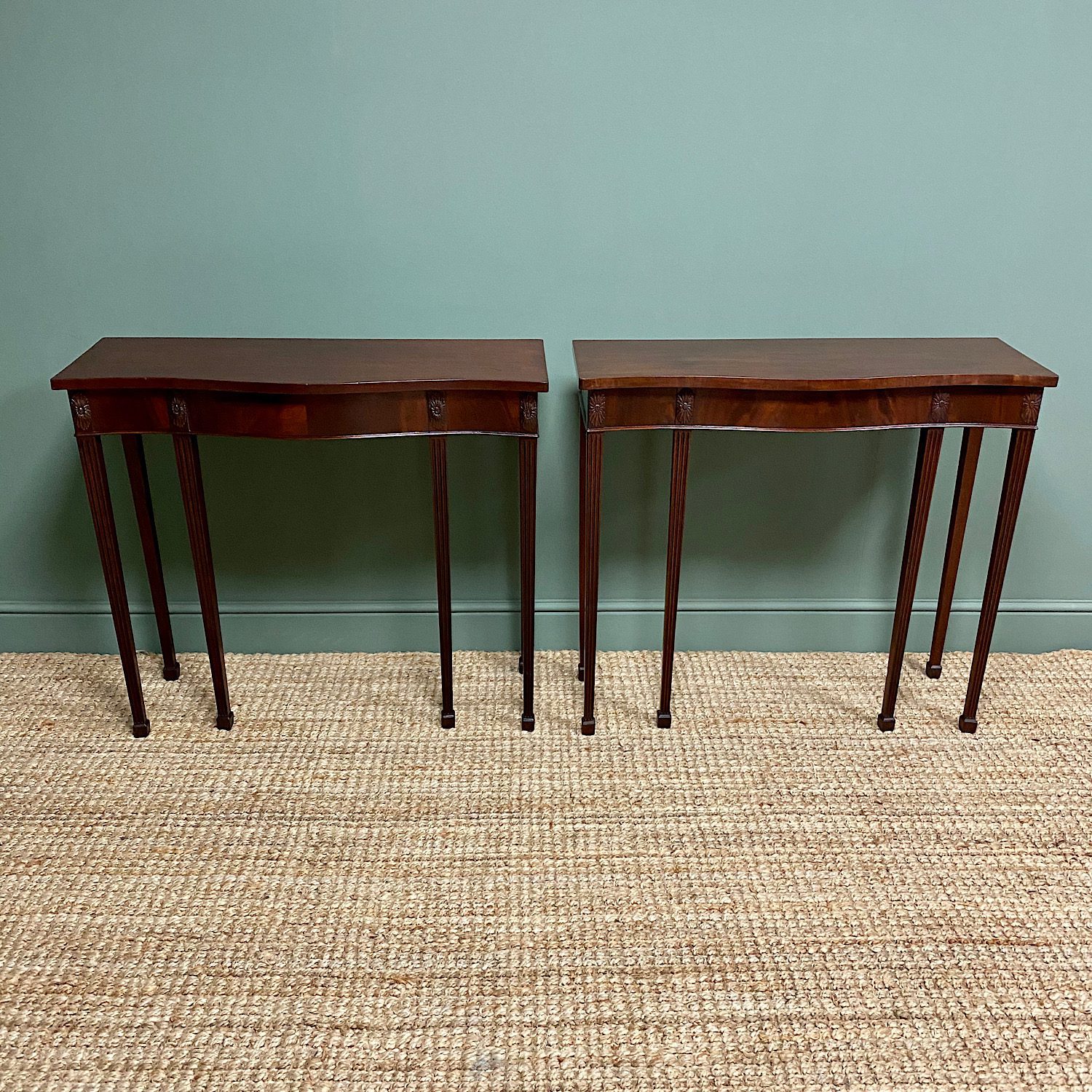

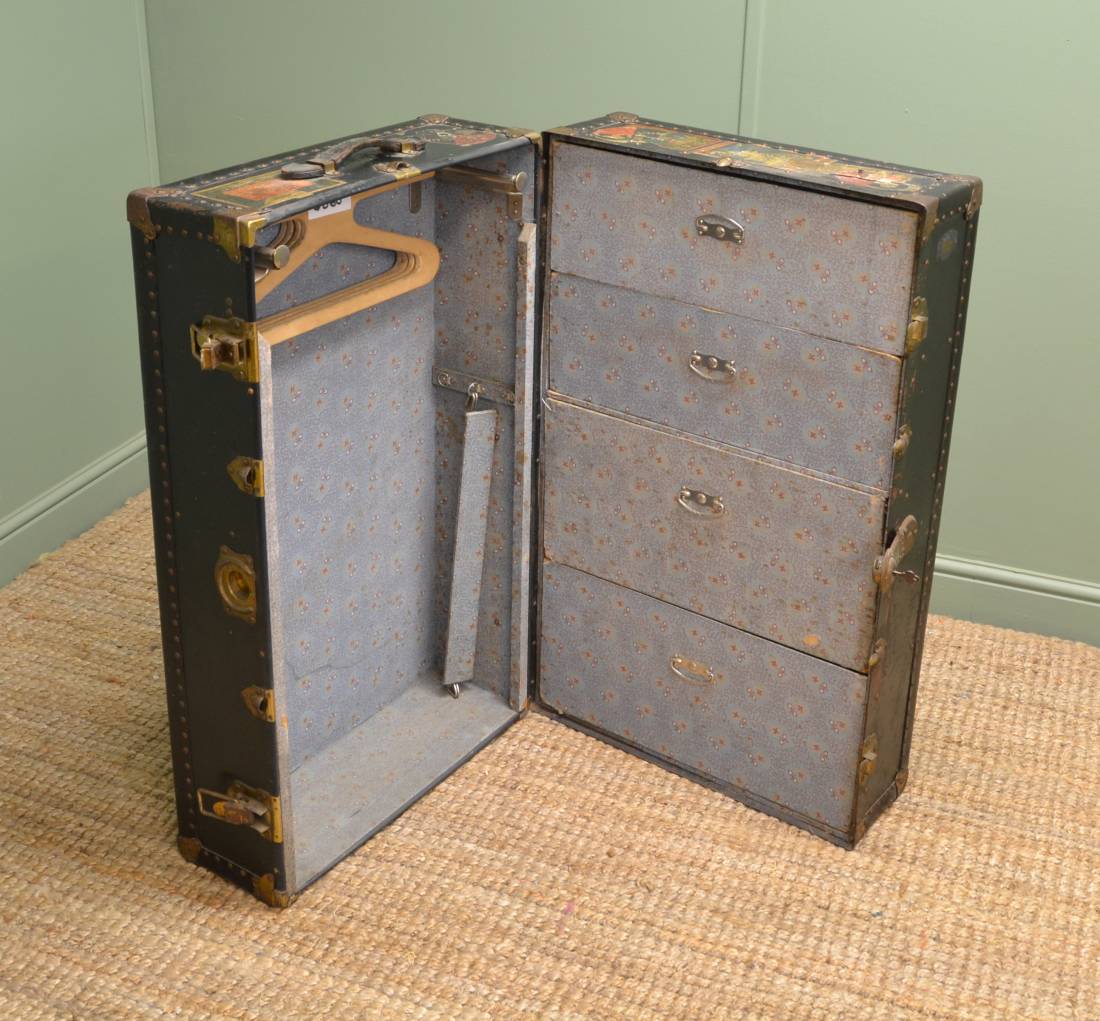
128 Comments. Leave new
Have ‘Breakfront/Sideboard’ with ‘label’ saying: James Reebe, LTD, 11-14 Cumberland St. Birmingham. Do You have any info. with regard to this
Hi
As far as I am aware, James Reebe, LTD, were antique dealers who restored antique furniture and sold them via their shop in Birmingham. I dont think they made furniture themselves
I hope this helps
I have a marble top washstand made by
Magnay & Sons, Makers, Carlisle
Does anyone have any information on this maker?
Thank you
Hi
Sorry this is not a maker I have come across before.
Thanks
James
Do you have a reference to a
SUPERFINE FURNITURE LTD
LIVERPOOL
1960
LICENCE NO. 2132
Hi
It looks like this is a fairly modern company, first registered in 1973.
I hope this helps
James
Nice compilation! So many great furniture/cabinet designers.
I have a sideboard with a white button size marking on top of drawer front:
It is a circle with “Laidler Robsons Ltd Sunderlaned” around the circle and “Furnishers” situated in the center of the circle between two asterisks. Would you happen to have any information on this marking?
I obtained the piece through family and no one has the history of the piece.
Thank you in advance.
Hi
Robsons Laidler Limited were based at 8,9,10 Holmside, Borough Road, Sunderland, Durham, England around 1910. They were furniture manufacturers.
I hope this helps
Thanks
James
Tallboy marked William Wales. Cabinet maker, upholsterer, undertaker. Yore Street, Redruth. Cornwall. Piece found in Adelaide, South Australia. Can you please give me any information about the maker.
Hi
I do not know of a William wales but could it be Blethyn, William from Pembrokeshire in Wales? He was a cabinet maker between 1844 to 1868
Thanks
James
I have a Victorian mahogany Canterbury which is stamped W Worpell. Any information would be so helpful.thank you.
Sorry this is not a maker I am familiar with
Thanks
James
Any information on this would be greatly appreciated.
C. H. BROADLEY,
CABINET MAKER &C.
King Cross, Halifax
Hi
This is not a cabinet maker I have come across before so unfortunately I do not have any information on them, sorry
James
Hi there,
I have limited information on CH Broadley, King’s Cross, Halifax. Just a work reference letter for an apprentice dated 1910 on letterhead. The apprentice was my maternal grandfather. Not sure what kind of information you are looking for.
Hi,
I am trying to find the complete name of a maker. the first half of the name is missing! ?ollum Cabinet and chair manufacturer. High Street Kingsland NE. (I am presuming kingsland NE is London)
Thank you
Annabelle
Hi
I am unsure who this maker is? There is a street called kingsland in London, so this is most likely where they were manufactured or sold. How old is the piece?
Many thanks
James
Good evening,
I am currently restoring a 4 drawer filing cabinet originating from 1940s. The cabinet was left for trash on the streets of Amsterdam.
Fortunately I saved it from being wasted, unfortunately it did not survive all this time in it’s fully original condition. Therefore I intend to find out more about the makers of the cabinet in order to restore it as best as I can.
In the back panel three marks have been etched but so far by browsing the internet I have not been able to determine make and decipher the marks.
One mark appears to read ‘Ruddock&Po’ (or something of the like), another mark reads 1942 and a third mark appears to be branded showing a crown on top of ‘GVIR’.
I assume it is a British produce (George VI and year 1942). But I have not succeeded in finding out anything about the name of the furniture company.
Any advice or help would be highly appreciated. If need be I can provide some images.
Thanks a lot in advance.
Kindest regards,
Pim from Amsterdam
Hi
Yes the mark will most likely be from George VI era but we only deal in pre 1900s so unfortunately I do not have much information on makers past this date. Sorry I can not be of any help with the maker.
Thanks
James
Hi James,
Thanks for your reply. I was not aware of the fact that my cabinet is a ‘youngtimer’.
Will continue my quest for information elsewhere.
Krgds, Pim
Hi
I have a desk by this maker: j Ellicock-Aberdeen
Any idea where I would start to see it’s value.
Hi
If you are looking for valuations, we have done a post here to help
Thanks
James
We are trying to identify the maker of our 19th century cylinder secretary with bookcase. We are not sure if it was English or American made. The mark we found is a capital “H”. It is the same font as the Richardson and Sons of Hull label. Does this ring any bells?
Hi
Is there any other letters other than the capital H ? as usually there would be other letters or the area stamped on the piece
Thanks
James
Unfortunately, no. Just this rather stylish H.
I have a lovely old chair made by ‘Upson’s Limited’ of 7-13 Great Dover Street London. I’d like to find out it’s age but can’t find anything about this company. The chair has ‘H.P’ and a 3 digit engraved on the underside. Does anyone have any info on this company please?
Hi
This is not a maker I have seen before, Sorry i can not be of any help with this
James
Dear Brainstrust
Can anyone provide any detail as to a cabinet-making firm ‘Thomas Eastman & Son,’ who had a substantial business in Portsea (Portsmouth), from 1785 to 1820s
I have a set of 12 dining chairs, 2 of which are carvers. On the underside of the seat there is an embossed mark of an intertwined C and R (or maybe G and R) Ltd. Can you help me to identify them. Thanks, Sue
Hi
I am not sure who this would be but maybe it is the initials of the owner who originally ordered them as it was common in the 19th Century to order furniture from cabinet makers and have their initials carved into the wood. It could also be a not as well known local cabinet maker who just added their initials as most larger cabinet makers would stamp their whole name.
Hi James, Thank you for your response. I have replied twice, and don’t see my messages, so third time lucky! I have a local antiques auctioneer looking at the mark, and will let you know what he thinks.
Hi
Yes please let me know what he thinks as I would be very interested to know who the maker is.
Thanks
James
I have a bedside table and cabinet marked ‘HM Makers of Furniture since 1894’
I have googled and searched but I haven’t found any clues as to who they were. Any ideas?
Hi
I am not sure on this maker, sorry. It may have been a small local cabinet maker who were not very well known. There were so many that we do not find records of which is a real shame.
Thanks
James
Hi James, Thanks for your response. I think the chairs are 19th Century, so you may well be right, although there is that “LTD” I have a local antiques auctioneer looking at he mark, and will let you know what he comes up with.
Hi James, Thanks for your response. I have a local Antiques auctioneer looking at the mark, and will let you know what he thinks. I replied to you earlier, but don’t see my message!
Looking to find out who mwd cabinet maker in Kent was
Hi
Im not sure on this maker, how old is your piece?
Thanks
James
We purchased a dining room buffet, server and extendable table in walnut. We were told it is North American in origin and late Victorian – made in 1900 or so. However, the embossed brass label says “English Hand Made,” and with a Logo inside a double triangle, “F.T.Co.” There are smaller triangles in each corner of the triangle. Do you have any idea who the furniture maker was?
Many thanks!
Hi
I am unsure on the maker but usually with a triangle mark, this will post date 1930s and we mainly deal in pre 1900s.
Thanks
James
Hello. I have a mid 19th century wardrobe with the stamp LEVE on the metal of the door hardware. I can trace it back to (West) Hartlepool. Any information on the maker? Thank you so much
Hi
This will be the word ‘Lever’ as the locks usually tell you have many levers are in the lock. The higher the lever (say a 4 lever lock) the better quality they will be
I hope this helps
Anybody know when Brough Bros Ltd, London Road, Liverpool went out of business? I have a beautiful armoire of theirs and trying to ascertain the value. Thanks!!
Hi
I think they stopped trading in the 1950s as I have found a record of their Ltd company going into liquidation in 1958 –
Name of Company: BROUGH BROTHERSLIMITED. Nature of Business: FURNITURE DEALERS.Address of Registered Office: 60-62 London Road,Liverpool. Liquidators’ Names and Addresses: Ronald ParkynBooth, A.C.A., 5 Rumford Place, Chapel Street, Liverpool, Cyril Metliss, F.C.A., 97 Park Street,London W.I Date of Appointment: 7th October 1958.
I live in the state of Tennessee in U.S. and also have an armoire made by Brough Bros.Ltd. I’m trying to get info on the date of my piece and Brough Bros.
Hi
Brough Bros Ltd were cabinet makers and upholsterers in Liverpool from the late 19th and early 20th Century. Most of the pieces by this manufacturer that I have seen have been from the Edwardian era ca. 1900
I hope this helps
James
I have what I believe is a 19th century slant top secretary desk with the markings of “J, C, & S” on the brass lock on each of the three drawers. Looks like a typical Edwards and Roberts piece with elaborate inlay all over the front drawers and the slant top. I’d guess it could be 1870’s. Mahogany with ornate brass hardware. Any thoughts on who could have made it? Believe it’s English from either London or Devon area.
Hi
I am unsure, I think the markings on the lock will be the makers of the brass-ware and not the piece of furniture. There were so many pieces not stamped by very good makers like Edwards and Roberts, so it may well be by them, but without the stamp you can only attribute the piece to them. If it is from the Devon area it could also be by Shapland & Petter as they did inlaid pieces as well as arts and crafts designs.
Hi! I’m reupholstering a set of dining chairs (they are hard to date) and have found the mark C T Prior carved inside the frame of one of the carvers. Do you have any info on this name? There’s a Robert and John Prior online, it says there were 3 family chair makers and I wondered if this could be one of them? Thanks in advance!
Hi
This is not a stamp I have seen before, maybe it was some relation to Robert and John Prior. Is your chair in the Windsor style? as if it is, it could well be by one of the Priors as they specialised in this style.
I hope this helps
James
Afternoon, there’s notability quite a famous cabinet maker missing. No mention of Collinson & Lock?
Hi
This is still a work in progress, we are updating this all the time so if you have any makers you would like to be added please let us know
Many thanks
James
What about this stamp:
MADE BY
E.J. ALLINGTON & Co.,
King Street Cabinet Works,
DERBY
Thanks!
Sorry this is not a maker I have seen before, what it the item that is stamped?
It’s a small walnut cabinet. This was probably 20th century, not earlier, maybe the 1920s or 1930s, but I thought the cabinet maker might be older.
I only deal in pre 1900s so i do not have much knowledge on 20th century makers, sorry. It is not a maker I have seen before.
We have just finished renovating an antique tilt-top table. It had brass casters. Would Coles be the right name for the 1850’s??
Hi
Would this be cope and collinson? as they were makers of brass ware and castors
Many thanks
James
Hi, I’m researching our family tree of which there were many cabinet makers based in Leeds Yorks. The surname was Carrack and the period is around 18th 19th century. Does anyone know where I could find out more about them? Many thanks.
Hi
The only information I can find on this name is – John Carrack furniture cabinet maker from Leeds between 1816 to 1834. He traded from addresses ‘near Bank’, ‘Far Bank’ and ‘Rear Bank’ between 1816 to 1822 and then moved to 1 Cavalier St until 1834.
My Anglican church in the Adelaide Hills is 150 tears old this year. We have 2 wooden carved chairs in the sanctuary each bearing a metal plaque under the seat which reads: J L Seaton, Upholder and Undertaker, 93 & 95 Hampstead Road. N.W. ( I assume London?) Can anyone help with any information re this maker as I cannot find anything. I think the chairs would have been made in the nineteenth century.
Hi, I have a an oak cutlery cabinet. It has two drawers and a top lid that opens. There is a crown stamp on the plate surrounding the three post lock with the name Jim Lee. Could this be an apprentice piece? Any ideas on manufacturer?
Hi
Im not sure on this name sorry. maybe it was an apprentice piece or stamped for the owner?
Thanks
James
Have you any record of a cabinet maker based in London in the 19th century by the name of Thomas Catchpole?
Hi
Sorry I have not seen any record of this cabinet maker before
Hi,
I have a 3 drawer, chest of drawers which I am trying to date. It is solid wood and has some lettering I can’t find anything about online. Inside one of the drawers it has R D 464574 carved into the wood (the D is a capital but small and is underlined) the piece also has E 244 on the back. It also has mortise locks on all drawers that look like brass. Any idea where this piece may have been made or what time ?
Thanks
Hi
The RD numbers are the British Design Registration Numbers. The letter E could possibly have been made between 1855 or 1881 but also these letters were introduced later (up to 1950) so it would be difficult to accurately date without seeing the chest in the flesh to look at the construction etc.
I hope this helps
James
Hi, I am restoring a George 111 housekeepers cupboard which is engraved with “WY” – probably made in London or the West Midlands? Cant find a maker – any ideas please ?
Karen
Hi
This would most likely be the initials of the owner who ordered the housekeepers cupboard to be made. This was often done on period pieces by the cabinet makers who made them.
I hope this helps
James
Hello
I have what I thought was an Arts and Crafts oak bookcase, pegged shelves and similar design to the `Sedley` by Liberty & Co, but I found a label on the back stating Morgan & Co The Hayes Cardiff, what do I really have?
Thanks
Hi
Quite often companies like Liberty would employ other cabinet makers to make their designs. So they probably used Morgan & Co to build this piece and then sold it through their shops.
I hope this helps
James
thank you
Hi
I have an oak court cabinet- very large/heavy – date and initials carved on the front – KJ 1731 – looking to find any info regarding the maker.
Hi
Unfortunately, You will find it difficult to find the makers details from 1731 as there were not many records of cabinet makers in the early 18th Century.
Hi
I have a card table with the letters ‘A’ and ‘M’ and a crown between these two letters
Below it says ‘hatherley’
Do you know what maker it could be?
Thank you
Hatherley was established in 1885 based in Gloucestershire and they produced their own ‘Hatherley patent’ mechanism on tables, step ladders, bicycle stands and easels.
I hope this helps
James
Thank you, James
Do you know what ‘A’ + Crown Symbol + ‘M’ mean? All Hatherley items I’ve found on the internet don’t have those letters and the crown mark
Thanks
Thank you, James
Do you know what ‘A’ + Crown Symbol + ‘M’ mean? All Hatherley items I’ve found on the internet don’t have those letters and the crown mark
Also, there is no word ‘pattern’ written together with ‘Hatherley’ as on the other items I see online
Thanks
Hi
I think this is the mark for ‘air ministry’
Thanks
James
Thank you, James
Do you know what ‘A’ + Crown Symbol + ‘M’ mean? All Hatherley items I’ve found on the internet don’t have those letters and the crown mark
Thanks
Have a wardrobe with a badge on saying London Made, Capacitos, Reg 587047 and Solid Carcass on it. Can’t find any information about it to know how old it is etc
Hi
I have not seen this maker before, sorry
Thanks
James
Hi, I have a small bedside cabinet labelled WM Richardson, 143/145 The Headrow, Leeds. I see a few pieces online with similar labels but they are all ‘office furniture’. I’m from Leeds originally so I was interested to find out more about Mr. Richardson. Any ideas? Many thanks in advance.
Hi
I dont know too much information on this company other than they made furniture (mainly office furniture) in the early 20th Century. William Richardson owned the company but there is not much more recorded about him.
Sorry I can not be of much help with this
James
My father has a bedchair, it is solid wood frame and arched arms, with floral and beige material upholstery. It was his mother’s and I have memories as a teenager, of using it in my room, so it has to be at least 65+ years old, probably more. It has a white label with red script which reads ” L.R.& S. Liverpool.Rammok design”. I have looked around but, cannot find any information that helps to identify and value the piece.
Any help would be appreciated.
Hi
Sorry this is not a maker I have come across before
I have a mirrored piece of furniture it has a drop-down glazed door with two labelled shelves (Sacred & Various) behind it. The bottom carved face cupboard (file) opening, hinges forward & contains several dividers. It stands on brass casters.Looks to be made of Mahogany. It was used in my family to house sheet music & it stood next to a piano in my Grandfather’s house in Plymouth. The label on the rear Bick,Wright & Co, Bristol. Were they the makers or just the seller?
Hi
This is not a name I have seen before so I imagine, this would be a retailers label
I hope this helps
James
I recently purchased a 8 seater extension dining table with the stamp P Hetherington 1898. Can you help identify the maker?
Hi
This is not a maker I have seen before, sorry.
Many thanks
James
I have a dining table stamped P Hetherington and handwritten on the timber is PH24317.. I’ve tried searching the maker without success. Any ideas on where this maker comes from?
I have a large Oak bookcase makers name Sydney J Whitehead cabinet Manufacturer14, Highcross St. Leicester.
There doesn’t seen to be any records on the net.
Could you help?
Hi
I think this company was based around the 1930s – 40s but didn’t product that many pieces. I have seen a few in the past (they are usually made from oak and quite utility in design) but I do not know much information on them unfortunately.
Many thanks
James
Trying to chase origins of a furniture company, formed pre world war 2 in the London area, by the name of WILLIAMS? There was a family connection with the Austins, makers of the Austinsuite range of furniture (as well as my own family) although as memory serves the two furniture families were bitter rivals and never spoke to each other.
Please respond by email
I have a Buffett that has been identified as being built by Hale, Kilburn & Co dating back to the late 1800’s. I do have photos of the piece along with photos of identifying markers that could be provided. Any assistance in dating and possibly finding a buyer for the piece is appreciated.
Hi
You would be welcome to email pictures and we can see if this would be of interest to us if you are in the UK. I think Hale, Kilburn & Co were American cabinet makers based in Philadelphia in the late 19th and early 20th Century.
Many thanks
James
We have a triangular cabriole table with a label from W. Schwartz Ltd London (we are in Australia). I cannot find any information on this name and am hoping that someone may know something? Any information would be appreciated.
My father in law is trying to research a corner chair he has. Has what looks like a crown with angle lines below that cross . 2 lines each side. Does this relate to the maker, we cannot find anythg
Hi
I would need an image to help with this
Many thanks
James
I am trying to find out about a company whose label is on a jardiniere I have. They are Wm Wallace & co of curtain street London. – can anyone assist?
Wallace, Wm & Co. from Curtain Road, London were cabinet makers, upholsterers and decorators founded by William Wallace. In 1895 they expanded to 155 Curtain Road in London and opened a Wholesale House Furnishers and Decorators shop selling to the public and trade. In the late 19th century, they changed their business model to supply large houses with bulk orders of everyday affordable furniture.
Hi – just wondering if anyone
Knows the age of an oak dining table with a disc under the top which is printed King Furniture top if disc, an outline of a King’s head like on an old pack of cards and the word Trademark around the bottom of the disc. Thank you
I found a “street cabinet” which looks to be anything from 1800 to 1910. It is stamped “WE”, which Claude tells me is William Eames (1843-1883). I can’t find anything about Eames. Can anyone throw light onto my mystery cabinet?
Commode, possibly 19th Century the makers mark in the left end panel is simply “AE”. I can find no reference to this maker anywhere. This is 3 drawers made of oak, no nails, only pegs. Heavy as heck and four little tiny itty bitty 8″ long feet that have been replaced twice because they are so spindly. Also had this piece fumigated as it had some sort of bug eating the wood. Husband’s family thinks it’s Italian. How do I post a picture for you
Hi
I am not sure on this stamp, it may well be the initials of the cabinet maker but without knowing the manufacturer I would struggle to help.
Many thanks
James
I have a bedroom set from the 20’s that is stamped T&Co . I can’t find any other information on this set other than the glass was made by H A glass company in march 1923 . The set is walnut veneer .
Hi
Sorry I am unsure on this, we mainly deal in pre 1900s so I do not have much knowledge on makers after this date.
Many thanks
James
I have a mahogany (?) flip top desk that is quite nice. It is marked in the word on the bottom right with a Knights Gold Colored helmet and the Audrains C. printed underneath . The next line English Patent (can’t read) and under that it has A.D. 1902. I can not find any info on Audrain or Audrail furniture makers. Help would be wonderful!
Hi
Sorry this is not a maker that I have seen before. Sorry I can not be of any help with this
James
Hi,
I have a set of 6 early 19th Century dining chairs each stamped TW any ideas
Hi
Im not sure, this may be the cabinet makers initials
Many thanks
James
I have an old Hand Made Furniture catalogue of furniture makers Bartholomew and Fletcher listed at 217 & 218 Tottenham Court Road , London. established in 1843 , have you any info on when this company traded up till. The catalogue it is not dated. They state in the Catalogue the Cabinet and upholstery works were at 60 Arlington Road, Camden Town, London NW1.
Hi
I think they traded until 1902
I hope this helps
James
I have an antique display cabinet in exceptional condition.
Unable to find any information on the manufacturer.
Hoping someone can help.
Only markings is as follows:
NISSONS FURNITURE
LONDN E2
Cheers
I think NISSONS FURNITURE were an early / mid 20th Century furniture maker so unfortunately I do not have much information on them (as we mainly deal in pre 1900s)
I have a set of Campaign Drawers. The drawers are Stamped:
RD No 410860
Does anyone know the manufacturer ? Or Dates and info would assist ?
Hi
This is the Registered Design number but it would be difficult to find the maker or manufacturer from this
Thanks
James
Can anyone help with info on J.Hunter & Co Ld from Manchester? Just acquired a sideboard with their mark
I have a buffet tagged Jaconomy, Manchester 1938 and Olympia 1939, Gold Medalists. I can’t find any info about Jaconomy.
Hi
Im not sure on this one sorry. We mainly deal in pre 1900s so i do not have much knowledge on some of the later 20th century cabinet makers.
Thanks
James
I am searching for details of a firm called Ernest Williams and Ronald Trew …… Decorators, Upholstery, Antiques
…….. 27 Davies St. Mayfair, London. EW is my great uncle. I have printed evidence he was quite prominent and a letterhead they used to trade with. EW moved into working at celebrity homes and then designing for theatre. His brother (my grandfather) was an upholsterer for Maples (by appt to the Queen).
I have just bought bureau bookcase and all of the drawers and insides of the cupboards are due stamped kaminsky high class cabinet makers Manchester but I am unable to find any reference to them here in the UK or in the USA. I love it. It appears to be mahogany and a good quality build with bevelled glass in the bookcase door panels. Is there anyone that can tell me something about the maker. Thanks
Martin
Hi
I am unsure on this maker sorry.
My wife and I have a federal period wall cabinet that we have had for years. We are downsizing and want to sell our antiques. One of the first and notable pieces is a signed at the bottom wall cabinet. The signature reads J A Shaw at the very bottom outside of the cabinet. Beautiful old style signature. Could this piece be attributed to John Shaw the famous cabinet maker from Maryland. I know he used paper labels to identify some of his work. It would be rare to see a physical signature from anyone of this period. Does anyone know what his middle name was? The style is definitely Federal period and the signature is definitely authentic. Anyone familiar with John Shaw’s work?
I picked up an antique parlour table made from solid maple with original dark red stain. Both top and shelf are stamped with following – THF B-JC (followed by a small degree like circle) then 690. Bottom of T is worn so could be a J? Anyone know the maker or origin? Many thanks, Geoff
Hello there. Such an amazing list! Unfortunately i couldnt find the one i was looking for. Ive got these chairs with faded metal mark something like B M Chrowners, furnishers …Sheffield. Have you ever come accross them please?
Hi
I am unsure of this maker, sorry.